
Cruise Seafaring: Explore the World by Sea
Unforgettable Journeys with Cruise Seafaring: Where Every Wave is a New Adventure
- Cruise News
- Cruise Ships

Understanding Cruise Ship Hull: Structure and Function

Cruise ship hull designs vary greatly to meet specific navigational challenges and environments. From shallow V-hulls for river ships to robust constructions for expedition ships tackling icy waters, these hulls incorporate multiple layers of reinforced steel panels to ensure stability and protect against ice.
Every aspect of the hull, including its skin and internal areas, is meticulously designed to enhance access and safety while serving a distinct purpose throughout the vessel’s operations across diverse marine settings.
In this article, we talk about cruise ship hulls, their function, and structure, Different Areas of a Cruise Ship Hull.
Table of Contents
What is a Cruise Ship Hull?

Source Image
The hull of a cruise ship acts as the base and outer shell of the entire vessel . This portion of the ship is largely submerged in the water , which is why the hull is crucial for ensuring the cruise ship stays afloat .
The hull lies beneath the waterline, covering the entire underbody of a cruise ship. It spans from the bow to the stern. In terms of height, the hull extends from the waterline down to the keep, which is the lowest point of the ship.
The cruise ship navigated through varying conditions of saltwater, with the hull enduring the impacts of waves and water pressure. The size and mass of the ship played a crucial role in how much of the structure was affected by these forces.
A significant portion of the hull was designed to withstand such impacts, ensuring the ship remained stable and secure.
Structure of a Cruise Ship Hull

Understanding the makeup of a cruise ship involves examining its various elements. The ship’s hull, composed of multiple layers of steel plating and structural segments, forms its outer skin, protecting it from saltwater exposure and water pressure.
Each layer of plating and paint serves a defensive function, shielding the ship’s internal structure and vital portions from the corrosive effects of the sea.
This complex defense against the elements ensures the ship’s resilience and functionality throughout its voyages, highlighting the critical relationship between its outer appearance and inner workings.
The hull of a ship is its foundational structure, providing strength and rigidity through frames and bulkheads that form its skeleton. Layers of plating ensure protection and integrity, serving the dual purpose of enhancing safety and maintaining stability.
Each component contributes to the overall shape and strength of the ship, crucial for navigating diverse marine conditions with robust structural integrity and operational safety.
What are the Fundamental Roles of a Cruise Ship Hull?

Buoyancy is essential for keeping everything a cruise ship is carrying afloat. The hull of the ship plays a critical role in ensuring this buoyancy and reducing water resistance, thereby enhancing fuel efficiency and making travel through the water smoother and faster.
The cruise ship is meticulously designed with various compartments to house essential equipment and ensure stability on the water.
The hull of the ship plays a crucial role in protecting these compartments and enhancing overall vessel stability. Every detail of the hull contributes to a sense of security for passengers enjoying their vacation at sea.
What Are the Various Areas of a Cruise Ship Hull?
Similar to many large vessels, a cruise ship’s hull includes numerous compartments and spaces, each serving essential roles in enabling the ship to operate safely.
1: Crew Accommodations and Facilities on Cruise Ship

Cruise ships are bustling environments where crew members manage various areas like barber shops, breaks spots, gyms, canteens, and the lively crew bar. Below deck, crew quarters provide essential rest areas within the sturdy hull of the ship.
In the mess, crew members from different ships mingle, sharing stories that connect their experiences across different portions of the ship. Onboard, these interactions foster camaraderie and a sense of community among the crew.
2: Storage Compartments are Areas Designated for Storing Items

On a cruise ship, every space is meticulously planned to meet needs ranging from bedding and food to beverages and supplies.
Storage areas and storage compartments equipped with refrigeration ensure everything is kept fresh and accessible throughout the ship’s sturdy hull.
3: Wastewater Tanks and Waste Treatment Facilities on Cruise ship

Cruise ships adhere to high standards for environmental impact, managing waste and wastewater treatment systems to protect waters and maintain a pristine view for passengers.
The ship’s hull ensures efficient navigation through various waters, while tanks onboard manage waste effectively, contributing much to environmental standards and passenger comfort.
4: Ballast Tanks on Cruise Ship

On a cruise ship, ensuring stability is crucial and is achieved through strategic adjustments to the ballast tanks. These tanks, filled with seawater, help regulate the ship’s center of gravity within its hull, maintaining optimal stability throughout the vessel.
By adjusting these tanks, the ship’s overall stability is ensured, which is vital for keeping the cruise ship afloat , ensuring safe navigation, and providing passenger comfort.
5: Engine Room on Cruise ship

The cruise ship engine room is the heartbeat of the vessel, housing essential engines that power its propulsion system. Fuel management is crucial to maintaining the ship’s stability and ensuring a balanced waterline.
The hull plays a vital role in the ship’s overall structure and integrity, divided into different segments for operational efficiency. Monitoring the amount of fuel and maintaining a proper balance throughout the ship is essential for safe and efficient maritime operations,
Is it Possible for Passengers to Explore the Cruise ship Hull?

In the domain of maritime operations, ensuring safety is paramount. Cruise ships, with their expansive hulls and intricate machinery, require expert personnel and specialized equipment.
Safety training and risk management sections are integral to mitigating safety risks for passengers and crew alike. Each ship is equipped with safety protocols and pieces of equipment essential for emergency response, ensuring a secure environment throughout every voyage.
For instance, if passengers were to enter the engine room without supervision, it could lead to severe consequences. The safe operation of the entire ship relies on various machines and equipment situated in the hull, emphasizing the necessity for stringent protective measures.
Frequently Asked Questions
What is in the bottom of a cruise ship.
The bottom of a cruise ship, commonly referred to as the hull in everyday conversation, is actually called the Keel—the primary foundation of the vessel. This critical element serves as both the lowest point and the first major component built during the ship’s construction.
What Is The Bottom Deck Of Cruise Ship Called?
The Orlop deck is a specific deck or section of a ship located below the waterline, traditionally used for stowing cables. It is recognized as the lowest deck level within the ship’s construction.
How Do Cruise Ship Float?
Large ships stay afloat by displacing water equal to their own weight. As they move forward, pushing water aside, the surrounding water continually seeks to return to its original position, exerting upward pressure that helps keep the ship buoyant.
What is The Cruise Ship Hull Shape?
Large oceanic vessels usually utilize a deep V-shaped hull to navigate water efficiently and smoothly. In contrast, river ships are more likely to have a shallower V-shaped hull or even a flat-bottomed hull, allowing them to cruise through diverse water depths.
How Cruise Ship Hull Thickness?
The thickness of a ship’s steel hull varies based on climate conditions. In colder northern regions, ships may have hulls up to two inches thick, while icebreakers feature steel hulls typically 19 to 20 inches thick.
What Are Cruise Ship Hull Markings?
Cruise ship hull markings typically include the ship’s name, registration number, port of registration, and sometimes decorative elements or logos of the cruise line. These markings are often painted on the ship’s hull for identification and regulatory purposes.
What is The Cruise Ship Hull Depth?
Roughly 30 feet (9 meters) of the typical large cruise ship is located below the waterline.
Related Posts

Do You Need a Passport to Go on a Cruise?

- Cruise Cabins & Staterooms
What is a French Balcony on a Cruise Ship?

- Cruise Tips
How to Prevent Seasickness on a Cruise?
Leave a reply cancel reply.
Your email address will not be published. Required fields are marked *
Save my name, email, and website in this browser for the next time I comment.

Bottom of a Cruise Ship (Every Part Explained)
This article may contain affiliate links .
The bottom of a cruise ship might not be the first thing that comes to mind when you think of a luxurious cruise journey, but it is undeniably one of the most vital components of maritime design and engineering.
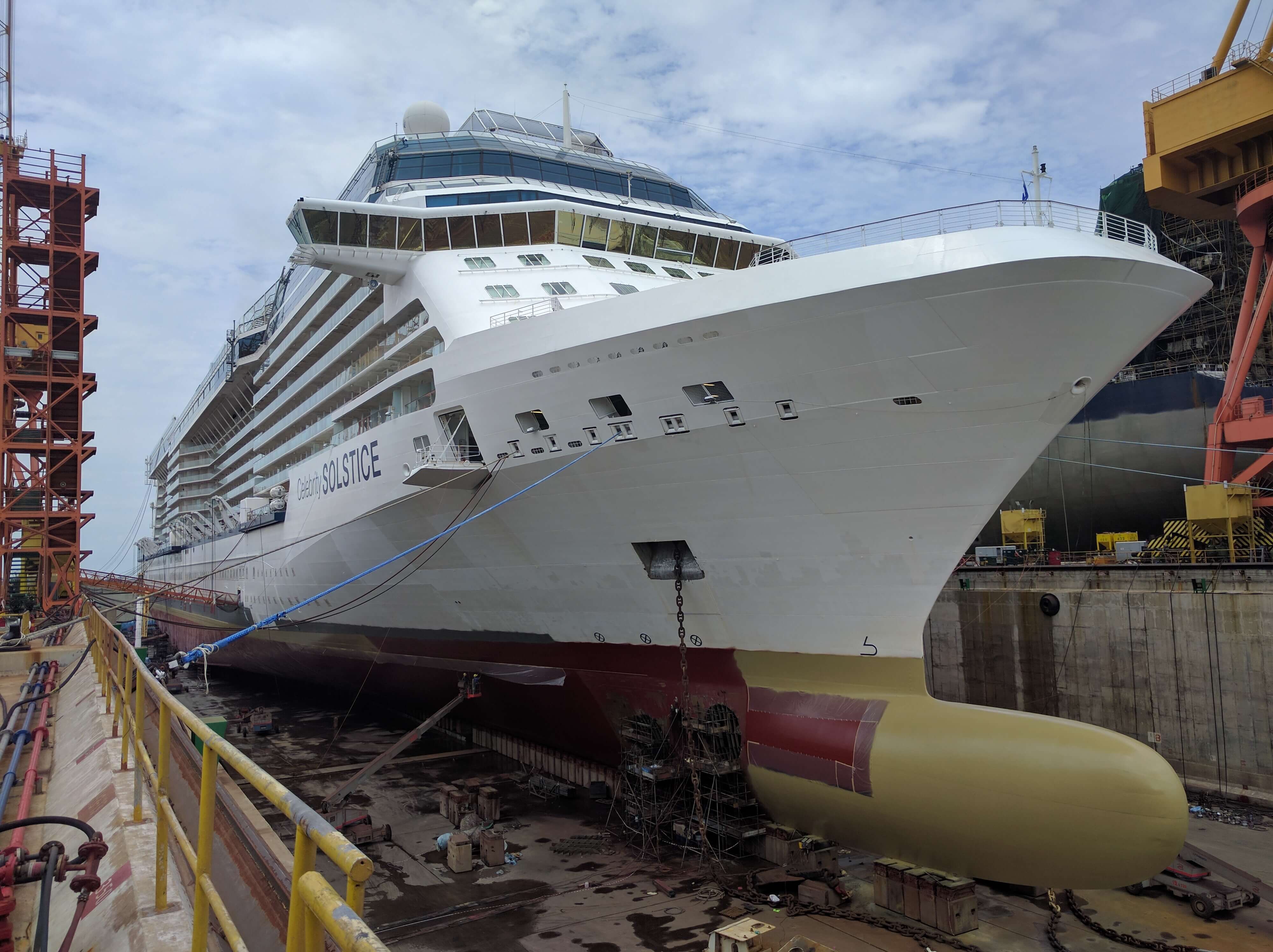
As you stand aboard a grand cruise ship, captivated by its opulent amenities and the vast seascape, it’s easy to forget the marvel that lies submerged beneath the waterline.
This crucial part of the ship, often overshadowed by its above-deck counterparts, plays a foundational role in ensuring performance, safety, and sustainability.
Delving into the intricacies of a cruise ship’s underside offers insights into the world of naval architecture, dispelling myths and revealing the innovations that guarantee our voyages are not only enjoyable but also safe.
Let’s embark on a deep dive into the unseen hero that keeps these magnificent vessels afloat.
What Is the Bottom of a Cruise Ship Called?
For those unfamiliar with naval terminology, deciphering the various parts of a ship can seem like navigating through a linguistic maze.
When it comes to cruise ships, or any seafaring vessel, the ‘bottom’ has its own special designation, deeply entrenched in shipbuilding traditions and maritime lore.
The bottom of a cruise ship is commonly referred to as the “hull.” The hull is the watertight body of the ship, extending from the main deck to the very base.
It is integral to buoyancy, stability, and the overall structural framework of the vessel.
Built to counteract water pressure, stave off corrosion, and facilitate smooth sailing, the hull’s design and materials are specifically tailored for maritime conditions.
Within the hull, there are distinct subdivisions:
Often regarded as the ship’s backbone, the keel runs centrally from the front to the back at the very bottom. It grants the ship its structural strength and is paramount for stability.
Situated at the lowest part of the ship’s hull, the bilge is where water typically accumulates due to various factors like condensation, potential leaks, or specific onboard activities.
Ships are equipped with bilge pumps designed to expel this water, ensuring the vessel remains dry and secure.
A protrusion at the front bottom of many modern ships, including cruise ships. This unique design helps reduce resistance as the ship moves through water, increasing fuel efficiency and speed.
It also aids in reducing the bow waves, making voyages smoother for passengers.
Over the centuries, the design and nuances of the hull have continually evolved, reflecting advancements in technology and the distinct requirements of diverse ship categories.
In the context of cruise ships, the hull stands out as especially vital, safeguarding the journey of thousands of passengers and crew members as they traverse the vast oceans.
To sum up, while the phrase ‘bottom of a ship’ may sound elementary, it unfolds a universe of design, engineering, and maritime heritage in the embodiment of the hull. It showcases mankind’s remarkable capacity to innovate and master the challenges of the deep blue.
What Does the Bottom of Cruise Ships Look Like?
The exterior of cruise ships, with their towering decks and panoramic windows, often captures the imagination of spectators. Yet, the underwater portion, though unseen by most passengers, is an engineering marvel in its own right.
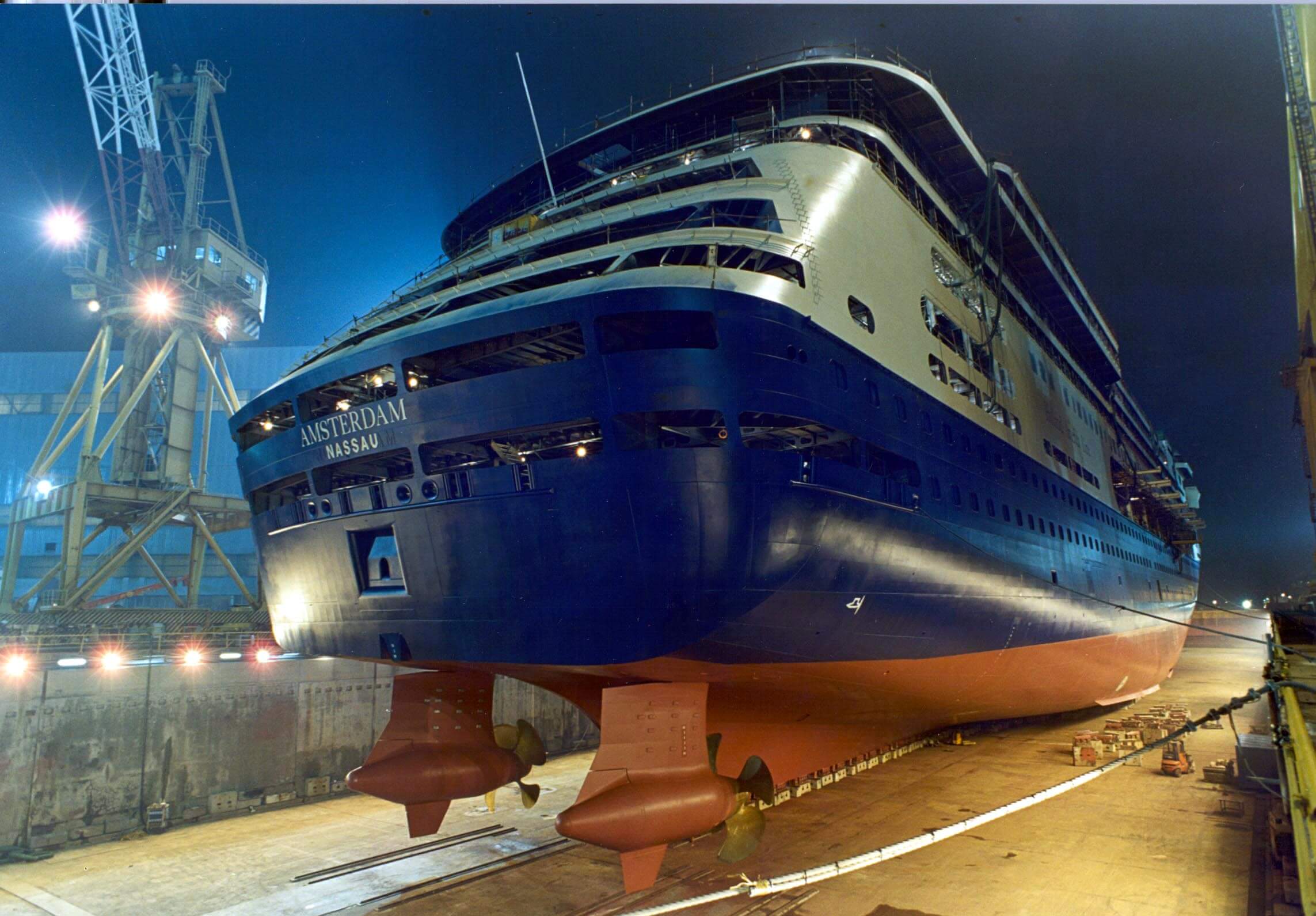
Image credit: Bolici
So, what does it look like underneath a cruise ship?
Shape and Structure
The underbelly of a cruise ship is streamlined and sleek, designed for efficient movement through water. While the top of the ship might have multiple decks and superstructures, the bottom narrows down to a smooth, somewhat flat surface, tapering towards the stern and bow.
Material and Color
Typically made of robust steel, the hull has a thickness that can handle the immense pressures of the sea. It is often coated with a specialized paint known as anti-fouling paint.
This unique paint, usually dark in color (like blue or black), prevents marine organisms like barnacles and algae from attaching to the ship, ensuring smoother movement and better fuel efficiency.
Bulbous Bow
As previously mentioned, many modern cruise ships have a bulbous protrusion at the front bottom. This rounded extension is easily identifiable and plays a pivotal role in enhancing the ship’s hydrodynamics.
Rudders and Propellers
Towards the stern of the ship, one can find the ship’s rudders and propellers. These critical components steer the ship and provide thrust, respectively. They are massive in size, with some cruise ship propellers spanning several meters in diameter.
Stabilizers
Extending from the sides of the hull are stabilizer fins, similar in appearance to airplane wings but submerged. They help counteract the ship’s roll, ensuring a more stable and comfortable journey for passengers.
Sensors and Equipment
The hull might house various sensors, like sonar, which assist in navigation and detecting underwater obstacles. These devices are often recessed or streamlined to maintain the smooth contour of the ship’s underside.
Keel and Bilge
Right at the center and deepest part of the bottom, the keel runs longitudinally, acting as the ship’s backbone. The bilge, a slightly curved section, is where water collects and is expelled by bilge pumps.
In essence, the bottom of a cruise ship is a fusion of form and function, showcasing advanced engineering tailored for the unique demands of maritime travel.
It’s an intricate balance of design elements, all working in harmony to navigate the complexities of the ocean and provide passengers with unforgettable voyages.
How Far Underwater Is The Bottom Of A Cruise Ship?
One of the marvels of maritime engineering is the ability to float structures weighing several tons effortlessly on water. Cruise ships, often referred to as “floating cities” due to their vastness, are a prime example.
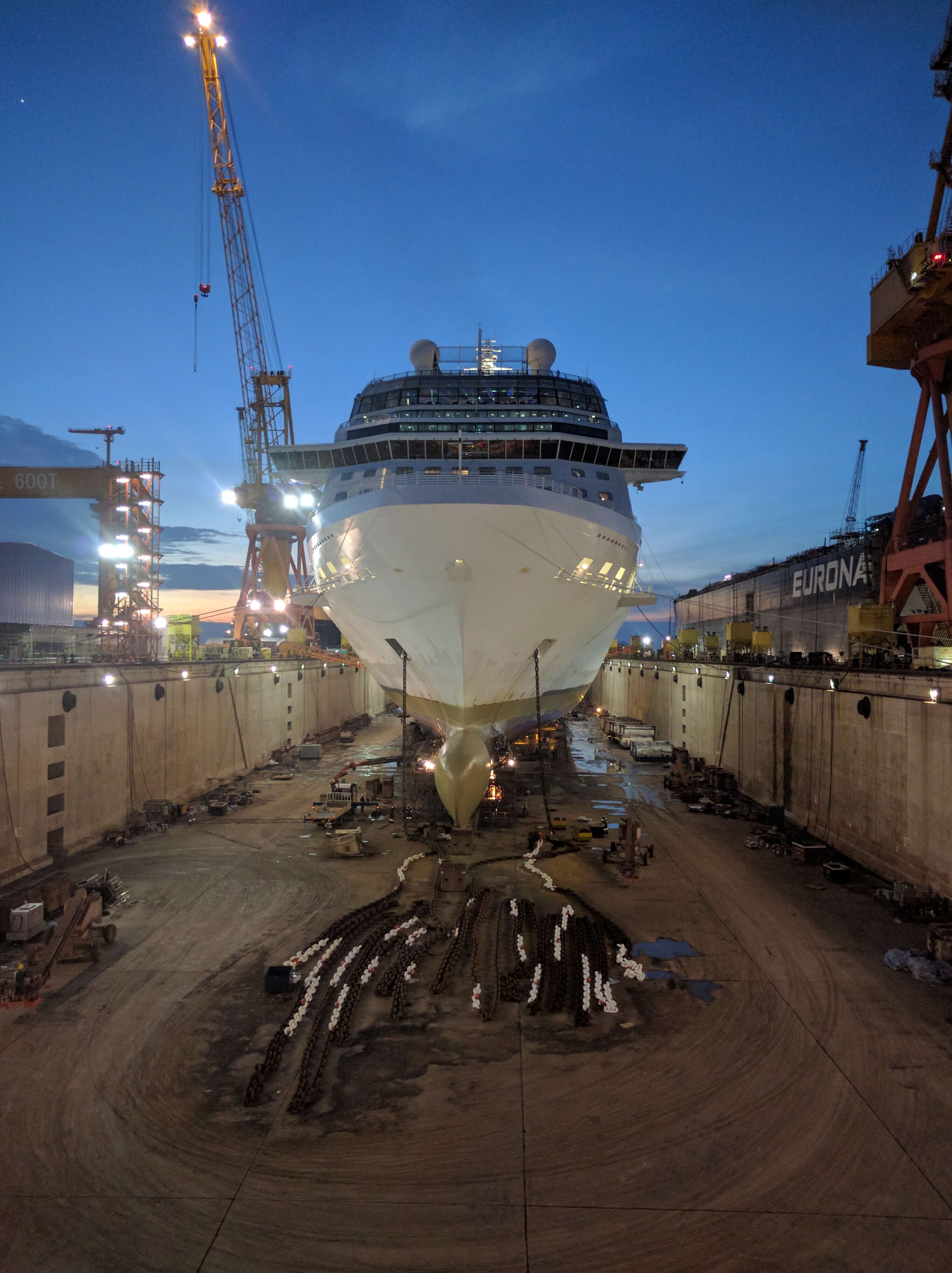
But just how deep does the bottom of such a vessel sit underwater? This submerged portion of the ship is technically termed its “draft.” Here’s an exploration of that aspect
Understanding Draft
The draft of a ship refers to the vertical distance between the waterline and the lowest point of the vessel’s keel. In simple terms, it indicates how much of the ship is underwater
Factors Influencing the Draft
Ship’s load.
As a ship takes on more weight, be it cargo, fuel, provisions, or passengers, it will sit deeper in the water, increasing its draft.
Water Density
Saltwater is denser than freshwater. So, a ship will sit slightly higher (have a shallower draft) in the ocean compared to a freshwater lake or river, all else being equal.
Temperature and Salinity
Variations in water temperature and salinity can influence its density, subsequently affecting the ship’s draft.
Typical Draft of a Cruise Ship
Cruise ships vary in size, from smaller luxury vessels to mega-ships. The draft can range considerably based on this:
Smaller Cruise Ships
They might have a draft ranging from 20 to 25 feet (6 to 7.6 meters).
Medium to Large Cruise Ships
These can have drafts anywhere from 25 to 30 feet (7.6 to 9.1 meters).
Mega Cruise Ships
The largest of cruise ships can have drafts exceeding 30 feet (9.1 meters), with some even approaching 40 feet (12.2 meters).
Operational Considerations
Navigating shallow waters.
Cruise ships sometimes need to access ports located in shallower waters. In such cases, having a shallower draft is beneficial. Some ships are specially designed with this in mind to expand their potential itineraries.
Ballast Systems
Modern cruise ships are equipped with ballast systems that can adjust the amount of water they carry, thereby influencing their draft to some degree, helping in optimizing stability and navigating varying water depths.
Safety Margins
While understanding the draft is essential for navigation, ships also maintain safety margins. This ensures that they don’t accidentally scrape the seabed when navigating areas close to their maximum draft.
In essence, the portion of a cruise ship that’s submerged underwater is influenced by a variety of factors, both inherent to the ship’s design and external conditions.
While passengers aboard enjoy the panoramic views and luxurious amenities, the depth at which the ship’s bottom sits plays a pivotal role in its safe and efficient navigation.
Are Cruise Ship Bottoms Flat?
The design and structure of cruise ships are fascinating topics of exploration, and a common question that arises is regarding the shape of their bottoms.
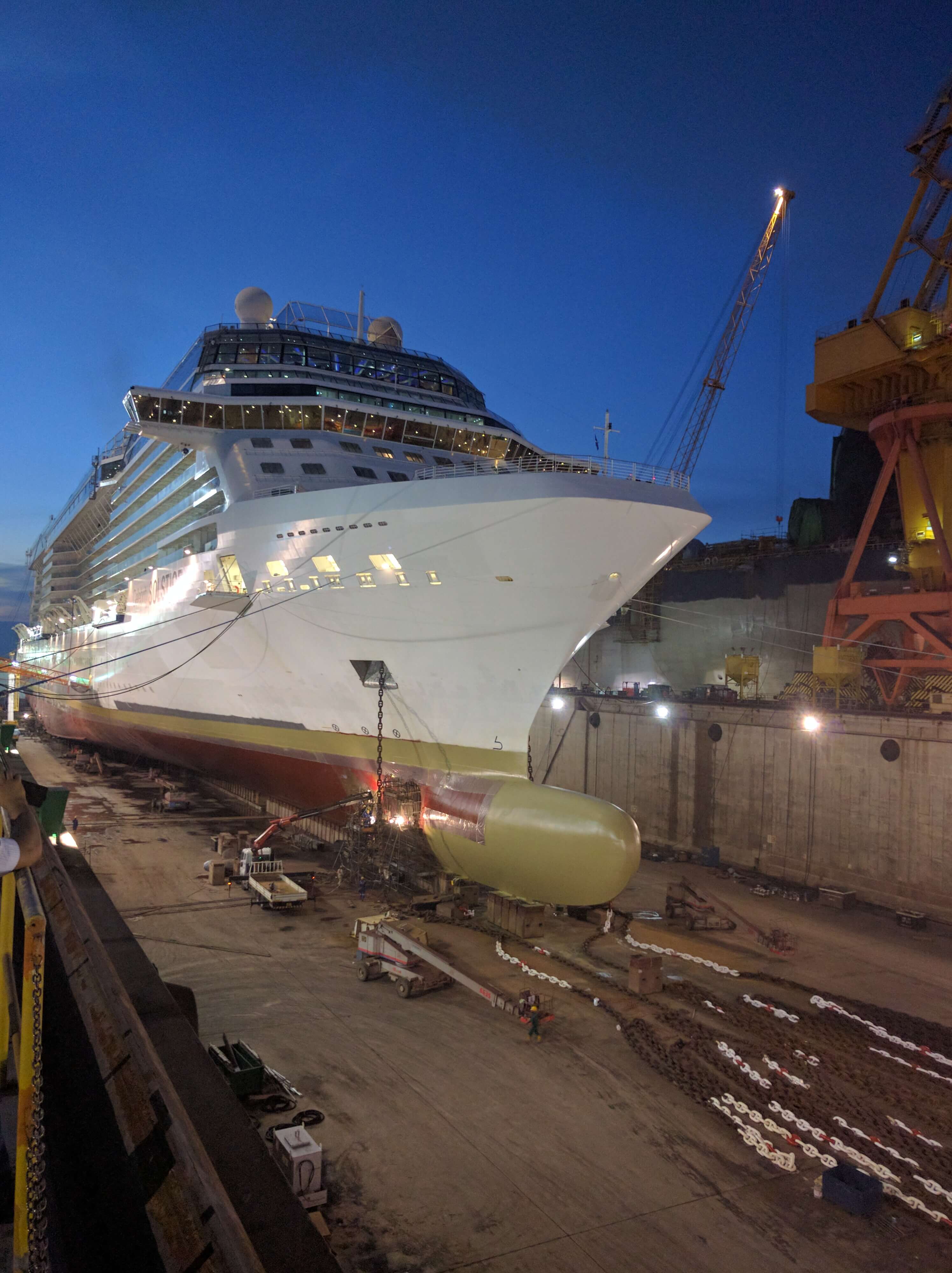
Are they flat, as one might presume when considering the massive size and weight of these vessels?
Let’s have a look:
General Design
At first glance, one might assume that the large, broad base of a cruise ship would be flat to maximize stability. However, the reality is more intricate.
Cruise ship bottoms are not entirely flat; they have a somewhat curved design, especially noticeable from the bow to the stern.
Why Not Completely Flat?
Several reasons dictate the non-flat design
Hydrodynamics
A completely flat bottom could create more resistance as the ship moves through the water. A slightly curved design allows for smoother passage, reducing drag and improving fuel efficiency.
Buoyancy and Stability
The curved design distributes the ship’s weight more evenly, allowing it to float and move with more balance, especially in rough seas.
Dealing with Depths
A slightly raised or curved design in certain parts of the bottom ensures the ship doesn’t run too deep, especially helpful when navigating shallower waters or ports.
Considerations in Modern Shipbuilding
As cruise ship designs evolve, so do the considerations for their hull shape. Environmental concerns, fuel efficiency, passenger comfort (minimizing motion sickness), and navigational needs all play roles in determining the precise curvature and features of a ship’s bottom.
Basically, while cruise ships might appear to have a vast, flat base given their immense size, their bottoms are not strictly flat.
They are designed with a subtle curvature and specific features that cater to the complex demands of maritime engineering, ensuring efficient, safe, and comfortable voyages for all on board.
Why is the Bottom of a Ship Painted Red?
The distinctive red color often seen painted on the bottom of ships, both historic and contemporary, is more than just an aesthetic choice.
This age-old tradition has a foundation in practicality, functionality, and maritime science. Here’s a closer look at why ships frequently don this fiery hue below the waterline:
Historical Use of Copper
In the age of wooden ships, sailors discovered that sheets of copper or copper-based paint on a ship’s hull would prevent marine organisms like barnacles and teredo worms from boring into the wood and damaging it. Copper, when in contact with seawater, releases ions that have anti-fouling properties.
The characteristic reddish-brown color of oxidized copper led to a distinct red hue on the ship’s bottom.
Anti-fouling Paint
Marine organisms attaching to the hull – known as fouling – significantly impact a ship’s performance and durability. It can increase drag, reduce speed, and lead to higher fuel consumption.
Modern anti-fouling paints, which are successors to the original copper sheathing method, often still contain cuprous compounds. While there are varying colors available today, the traditional red remains a popular choice due to its historic ties.
Visibility of Damage and Fouling
Red offers a stark contrast to the deep blues and greens of ocean waters. This contrast makes it easier for sailors and dock workers to spot damages, leaks, or excessive fouling on the ship’s hull.
Tradition and Aesthetics
Over time, the red bottom became a maritime tradition. Even with the evolution of marine paints and coatings, many ship owners and builders still prefer the classic red for its aesthetic appeal and nod to seafaring heritage.
Economical and Practical
Red pigments were historically more affordable and abundant, making them a cost-effective choice for shipbuilders and owners.
Variations in Hue
It’s worth noting that while red is common, it’s not universal. Different shades ranging from brownish-red to pink or even other colors like black and blue can sometimes be observed.
These choices can be influenced by the specific anti-fouling product used, company branding, or other functional considerations.
In summary, the red bottom of ships is a marriage of practicality and tradition. While it has its roots in the bygone era of wooden vessels and copper sheathing, the color persists today as a symbol of maritime legacy, aided by the practical benefits it continues to offer in the modern age.
How Do You Clean the Bottom of a Cruise Ship?
Ensuring the hull of a cruise ship is clean is not just an aesthetic concern; it’s crucial for the vessel’s efficiency, safety, and environmental footprint.
Over time, marine organisms, such as barnacles, algae, and mussels, can attach themselves to the ship’s bottom. This phenomenon, known as biofouling, can slow the ship down, increase fuel consumption, and even damage the hull.
So, how do cruise lines keep these gigantic vessels in pristine condition beneath the waterline?
Dry Docking
This is the most comprehensive method for cleaning and maintaining the hull. Every few years, cruise ships are scheduled for dry docking. During this process, the entire vessel is taken out of the water, allowing workers to access and clean the ship’s bottom thoroughly.
This is also an opportunity to inspect the hull for damages, repaint it with anti-fouling paint, and conduct any other necessary repairs or upgrades.
Underwater Cleaning Robots
With advancements in technology, some cruise lines employ automated underwater robots or remotely operated vehicles (ROVs) equipped with brushes and cameras.
These devices can scrub the hull’s surface while the ship is still in the water, removing accumulated organisms and grime.
For specific tasks, or when robots might not be feasible, trained divers are deployed. They manually clean and inspect the hull using specialized tools. This method is particularly useful for addressing localized issues or conducting minor repairs.
Anti-fouling Coatings
One preventive measure against biofouling is the application of anti-fouling paint. These coatings release biocides, substances that deter marine organisms from attaching to the hull.
The paint not only provides a smoother surface, reducing drag and enhancing fuel efficiency, but also minimizes the need for frequent cleanings.
Ultrasonic Systems
Some modern ships are equipped with ultrasonic anti-fouling systems. These use ultrasonic waves to prevent marine growth on the hull.
The vibrations create an environment that’s unfavorable for organisms, thereby preventing them from settling on the ship’s bottom
Eco-friendly Solutions
With growing environmental concerns, the maritime industry is continuously exploring eco-friendly solutions for hull cleaning. Techniques that don’t rely on harmful chemicals and that cause minimal disruption to marine ecosystems are being prioritized.
Maintaining the cleanliness of a cruise ship’s bottom is an ongoing task that combines manual efforts, technological solutions, and preventive measures.
The commitment to keeping these colossal vessels clean underscores the importance of efficiency, safety, and environmental responsibility in the cruise industry.
What is in the Bottom of a Cruise Ship?
While the vast decks and luxurious amenities are what usually capture the attention of cruise-goers, the bottom levels, often hidden from the guests’ view, play a pivotal role in ensuring the smooth operation of the entire vessel.
These areas, which make up the foundational layers of the ship, are both functional and crucial for safety. So, what exactly can one find in the bottom of a cruise ship?
Engine Rooms
Typically situated deep within the ship, the engine rooms house the primary machinery that powers the cruise ship. From massive diesel engines to electrical systems, this is where the ship’s heartbeat resides.
Large tanks containing the fuel needed to power the ship’s engines are usually located towards the bottom. Their placement helps in maintaining the ship’s balance and stability.
Ballast Tanks
Ballast tanks play a vital role in maintaining a ship’s stability. They can be filled or emptied of water to adjust the ship’s weight and balance. This is particularly useful when accommodating changes in fuel weight or cargo distribution.
As mentioned earlier, the bilge is the lowest point of the ship where water, from sources like condensation or minor leaks, collects. Bilge pumps are stationed here to expel this water and ensure the ship remains dry.
Stabilizers’ Machinery
While the actual stabilizers are external and protrude from the sides of the ship, the mechanisms and controls that operate them are located within the lower levels.
Waste Treatment Facilities
Modern cruise ships are equipped with advanced waste treatment systems that handle and process sewage, gray water, and other waste products. This ensures environmental regulations are met and minimizes pollution.
Storage Areas
The bottom levels often contain vast storage rooms. These are crucial for storing provisions, from food and drink to spare parts and other essential supplies needed for long voyages
Crew Quarters
While crew members reside throughout the ship, some crew quarters, especially for those working in the engine rooms or other lower-deck service areas, might be located towards the ship’s bottom.
Laundry Facilities
Given the number of guests and the volume of linens, towels, and uniforms, cruise ships require extensive laundry facilities. Some of these operations are located in the lower decks due to space requirements and logistical convenience.
Water Tight Compartments
For safety, the bottom of the ship contains several watertight compartments. In the event of a breach or flooding, these compartments can be sealed off to prevent water from spreading and compromising the ship’s buoyancy and stability.
In essence, the bottom of a cruise ship is a bustling hub of crucial operations and facilities, all working seamlessly behind the scenes.
These layers ensure that guests above can enjoy their journey with peace of mind, blissfully unaware of the intricate dance of engineering and logistics taking place below their feet.
Videos Underneath a Cruise Ship
Here’s an interesting video of a guy dropping a gopro underneath a cruise ship…
And here’s a video of a cruise ship in drydock:
To Sum It Up
The bottom of a cruise ship, often overshadowed by the vessel’s towering decks and luxurious amenities, holds a rich tapestry of engineering, history, and maritime tradition.
From the precise design of the hull to ensure hydrodynamic efficiency and stability, to the depths at which these massive ships sit in the water, and the distinctive red hue that has colored the undersides of vessels for centuries, each aspect serves a purpose rooted in functionality and heritage
. The red paint, in particular, is a vivid testament to the blending of past maritime practices with contemporary needs, symbolizing the enduring spirit of naval exploration and adventure.
As passengers sail to their next destination, they’re buoyed by a legacy of seafaring innovation and tradition that lies beneath them, ensuring every voyage is safe, efficient, and in harmony with the vast oceans that cradle these magnificent vessels.
More Reading...
- Tipon, Peru: Archaeological Site
- 14 Best Walkie-Talkies For Cruise Ships
- How Often Do Cruise Ships Sink?
- Best Travel Cribbage Boards
- The Lowest Deck On A Ship
- Best Travel Gifts
Dan Claydon

Cruise FAQs
How thick is the hull of a cruise ship.
Key Takeaways
- The hull of a cruise ship is crucial for ensuring stability, safety, and structural integrity.
- The thickness of the hull varies based on the size of the ship, the materials used, and the intended operating conditions.
- The hull plays a significant role in passenger comfort by reducing motion, noise, and vibrations.
- Innovations in hull design focus on lighter and stronger materials, eco-friendly solutions, and advanced technologies for enhanced safety and performance.
The Importance of a Strong Hull in Cruise Ship Design

Understanding the Structure of a Cruise Ship’s Hull
The impressive thickness of a cruise ship’s hull.
Factors That Determine Hull Thickness
The role of the hull in ensuring passenger comfort.
Stability and Smooth Sailing
Noise and vibration reduction, protection against external elements, testing and certification processes for cruise ship hulls, non-destructive testing methods, classification societies and certification standards, innovations in cruise ship hull design, case studies of noteworthy cruise ship hulls, largest and most technologically advanced hulls, historic and iconic cruise ship hulls, maintenance and inspection of cruise ship hulls, the future of cruise ship hull design, frequently asked questions, can passengers feel the movement of the ship through the hull, how does the hull thickness affect the ship’s stability in rough seas, are there any specific regulations or standards regarding hull thickness for cruise ships, what materials are commonly used for cruise ship hulls, how often do cruise ship hulls need to be inspected and maintained.
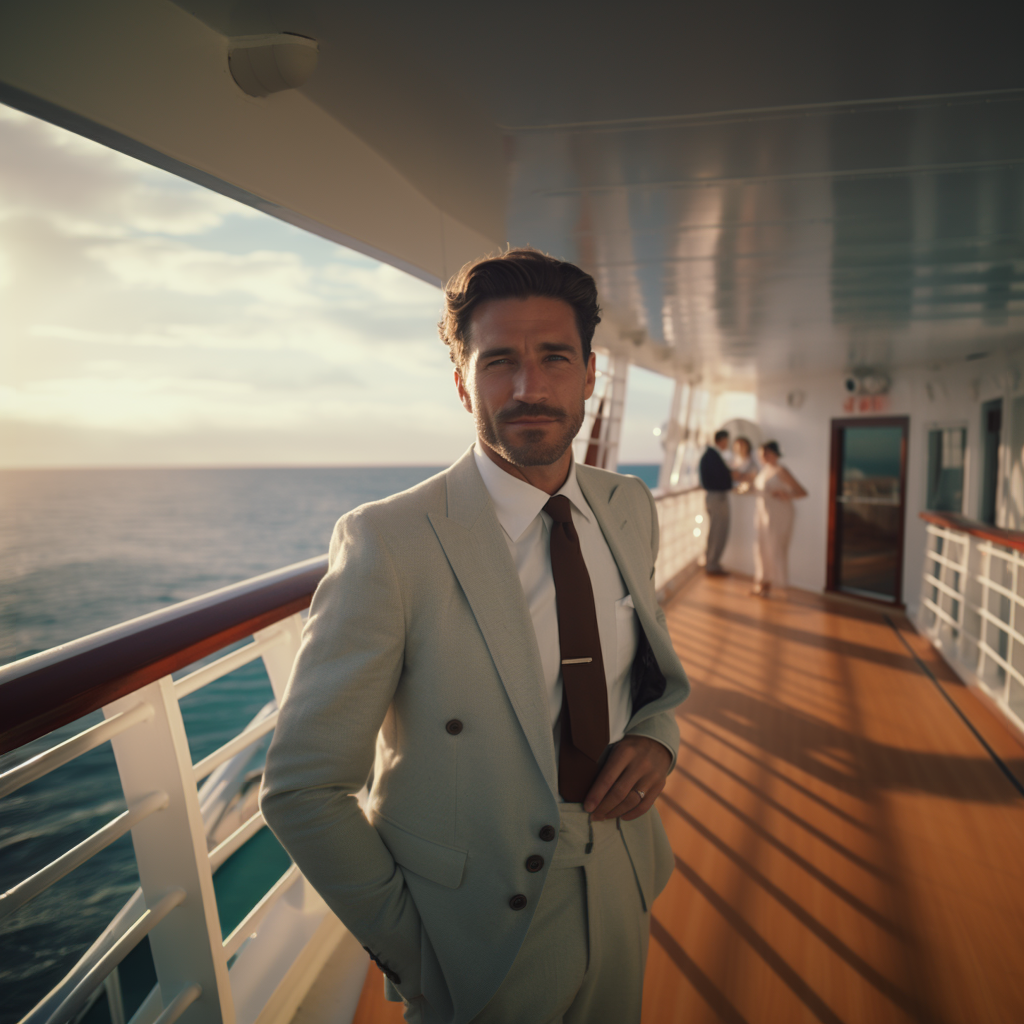
Alfons is the visionary leader and driving force behind Voyager Info’s success. As the Editor in Chief, he brings a wealth of experience and an unwavering passion for travel to the helm of our cruise-centric platform.
With a lifelong fascination for exploring new horizons, Alfons discovered his love for the ocean and cruising at a young age. From sailing across pristine Caribbean waters to embarking on daring expeditions to far-flung destinations, he has amassed a treasure trove of first-hand experiences in the world of cruising.
How Tall Is Suri Cruise 2022
How To Become A Cruise Director

Alfons is the visionary leader and driving force behind Voyager Info’s success. As the Editor in Chief, he brings a wealth of experience and an unwavering passion for travel to the helm of our cruise-centric platform. With a lifelong fascination for exploring new horizons, Alfons discovered his love for the ocean and cruising at a young age. From sailing across pristine Caribbean waters to embarking on daring expeditions to far-flung destinations, he has amassed a treasure trove of first-hand experiences in the world of cruising.

You may like
Who installs cruise control near me.
- Cruise control can be installed by mobile installers or car customization shops, providing convenient options for customers.
- Performance upgrades such as engine tuning, exhaust system enhancements, and suspension modifications can be done alongside cruise control installation.
- Exterior enhancements like body kits, custom paint jobs, and aftermarket wheels can also be considered when installing cruise control.
- Interior modifications such as custom upholstery, sound systems, and LED lighting can enhance the driving experience with cruise control.
Search Online Directories and Websites
Check with local car dealerships, contact auto repair shops, ask for recommendations from friends and family, look for specialized car electronics shops, check with car audio and accessories stores, consult with car dealership service centers, contact mobile electronics installers, check with car customization shops, consider diy installation with online guides and tutorials, how long does it typically take to install cruise control in a car, are there any specific car models or brands that are more difficult to install cruise control in, can cruise control be installed in older car models, or is it only compatible with newer vehicles, what is the average cost of installing cruise control in a car, is it possible to install cruise control in a car that already has a complex audio or electronics system.

Claire, a creative soul with an unquenchable thirst for storytelling, is an integral part of the Voyager Info team. As a dedicated writer, she weaves captivating narratives that transport readers to enchanting cruise destinations and beyond.
Claire’s love affair with writing began at an early age when she discovered the magic of words and their ability to craft worlds and emotions. Her innate curiosity led her to explore various literary genres, but it was travel writing that truly captured her heart. Drawing inspiration from her own globetrotting adventures and encounters with diverse cultures, Claire embarked on a journey to become a travel writer par excellence.
How To Cancel Msc Cruise Online

- Access the MSC Cruises website.
- Log in to your account.
- Navigate to the ‘Manage My Booking’ section.
- Locate your booking.
- Select the ‘Cancel’ option.
- Review the cancellation policy and any fees that may apply.
- Confirm your cancellation request.
- Once you’ve completed the process, you will receive a confirmation email or notification.
- Contacting customer service is important for valuable assistance and guidance in the cancellation process.
- Customer service is available through various channels such as phone, email, live chat, and social media.
- The customer service team can provide clarification on refund policies and discuss alternative options.
- By reaching out to customer service, passengers can receive support for navigating the online cancellation process and ensure a smooth cancellation experience.
Access the MSC Cruises website
Log in to your account.
- Visit the MSC Cruises website and click on the ‘Log In’ button.
- Enter your email address and password associated with your account.
- If you’ve forgotten your password, click on the ‘Forgot Password’ link.
- Follow the instructions sent to your email to reset your password.
Navigate to the "Manage My Booking" section
Locate your booking and select the "cancel" option.
- Go to the MSC Cruises website and click on the ‘Manage My Booking’ section.
- Look for your booking among the list of your current reservations.
- If necessary, enter your booking reference number or provide other identifying information.
- Once you have found your booking, click on the ‘Cancel’ option.
- This will start the cancellation process and you will be asked to confirm your decision.
Review the cancellation policy and any applicable fees
Provide the necessary information, such as your booking number and reason for cancellation, confirm your cancellation request, receive a confirmation email or notification of your cancellation, check your refund status, if applicable.
- Login to your MSC Cruises account.
- Go to the ‘My Bookings’ section.
- Find the cancelled booking and click on it.
- Look for the refund status option and click on it.
- You will see the current status of your refund, whether it is being processed or if there are any cancellation fees deducted.
Contact customer service for any further assistance or inquiries
What is the refund policy for cancelling an msc cruise online, how long does it take to receive a refund after cancelling an msc cruise online, are there any fees associated with cancelling an msc cruise online, can i cancel only a portion of my booking online, or do i have to cancel the entire reservation, what happens if i need to cancel my msc cruise online, but i don’t have my booking number.
So, while canceling your MSC cruise online may not be the most thrilling experience, with a little patience and persistence, you’ll get through it. Happy canceling!
What Not To Do On A Disney Cruise
- Avoid overpacking and instead pack light and efficiently, considering activities and choosing versatile clothing items.
- Research and plan ahead to make the most of your cruise experience, including checking the cruise schedule for special events, exploring onboard activities, and researching port excursions.
- Make sure to check the daily schedule for character appearances and plan your day accordingly to meet your favorite characters.
- Take advantage of photo opportunities with characters, both through professional sessions and impromptu meet and greets, to capture magical moments and create lasting memories.
Pack Light and Efficiently
Research and plan ahead, don’t miss out on character meet and greets, check the daily schedule for character appearances, line up early for popular characters, take advantage of photo opportunities, avoid overindulging in food and drinks, don’t forget to take advantage of onboard entertainment, attend broadway-style shows and performances, participate in trivia nights and game shows, enjoy live music and dance parties, follow safety guidelines and rules, avoid missing important announcements and updates, pay attention to the daily navigator or cruise app, listen for public address system announcements, check the ship’s informational screens, be mindful of your budget, don’t miss the castaway cay experience, plan your day on disney’s private island, enjoy water sports and beach activities, explore the nature trails and bike rentals, avoid overworking yourself with a packed schedule, can i bring my own food and drinks on board, are there any age restrictions for the onboard entertainment, what are the safety guidelines and rules for children on the cruise, are there any additional costs for the castaway cay experience, what happens if i miss an important announcement or update.
And most importantly, don’t miss out on the incredible experience of Castaway Cay. Trust me, you’ll thank me later.

Meet Asra, a talented and adventurous writer who infuses her passion for exploration into every word she writes. Asra’s love for storytelling and her insatiable curiosity about the world make her an invaluable asset to the Voyager Info team.
From a young age, Asra was drawn to the power of words and their ability to transport readers to far-off lands and magical realms. Her fascination with travel and cultures from around the globe fueled her desire to become a travel writer, and she set out on a journey to turn her dreams into reality.

Affiliate disclaimer
As an affiliate, we may earn a commission from qualifying purchases. We get commissions for purchases made through links on this website from Amazon and other third parties.

How Old Do You Have To Be To Work On A Cruise Ship

How To Set Cruise Control On Tesla Model X
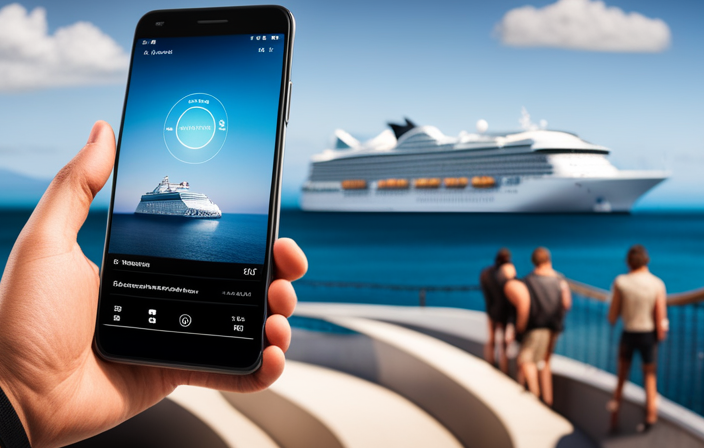
How To Check Weather For A Cruise
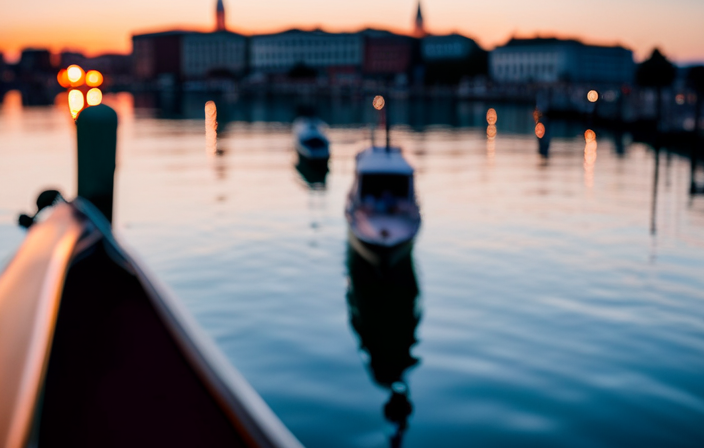
How To Get From Venice To Chioggia Cruise Terminal
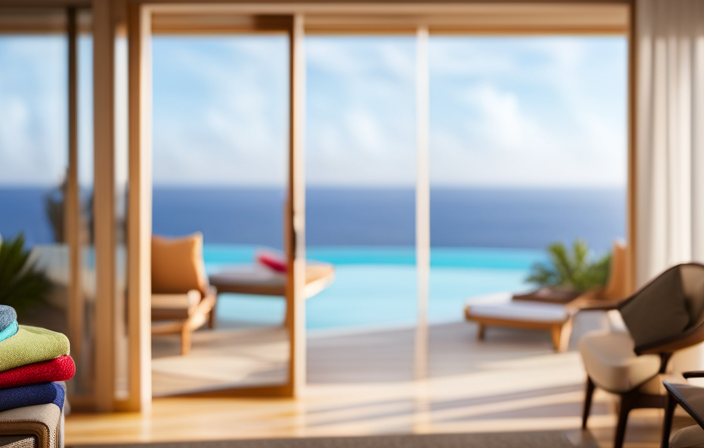
How Do You Qualify For An Ultra Cruise On Carnival
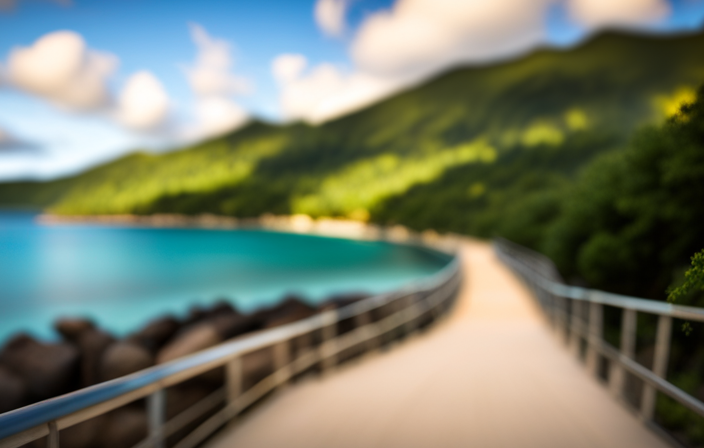
How To Get To Magens Bay From Cruise Port
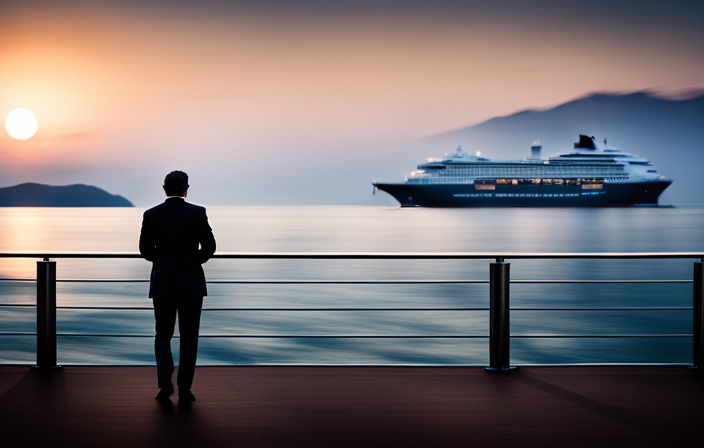
How Long Does Dizziness After A Cruise Last

Azamara Onward: Origins, Renovation, and Future Plans
Anthony Bourdain: Unconventional Culinary Icon and Global Influencer

Authentic Tacos and Local Delights: A Culinary Adventure in Cabo San Lucas

Arctic Adventure: Uncharted Destinations With Le Commandant Charcot


Authentic Art, Exciting Auctions: The Ultimate Cruise Ship Experience!

How To Turn On Cruise Control Tesla Model 3

How To Set Cruise Control Tesla Model Y

Finding Deals On Unsold Cruise Cabins: Tips And Strategies

How To Get From Venice To Trieste Cruise Port


What is the Bottom of a Ship Called & Look Like? (Every Part)
The bottom of a ship is generally referred to as the hull.
However, the hull is made up of various parts and features, which all have their role to play in keeping the ship afloat and able to sail safely.
As you will see, the front of the bottom of the ship is very different from the stern (the back).
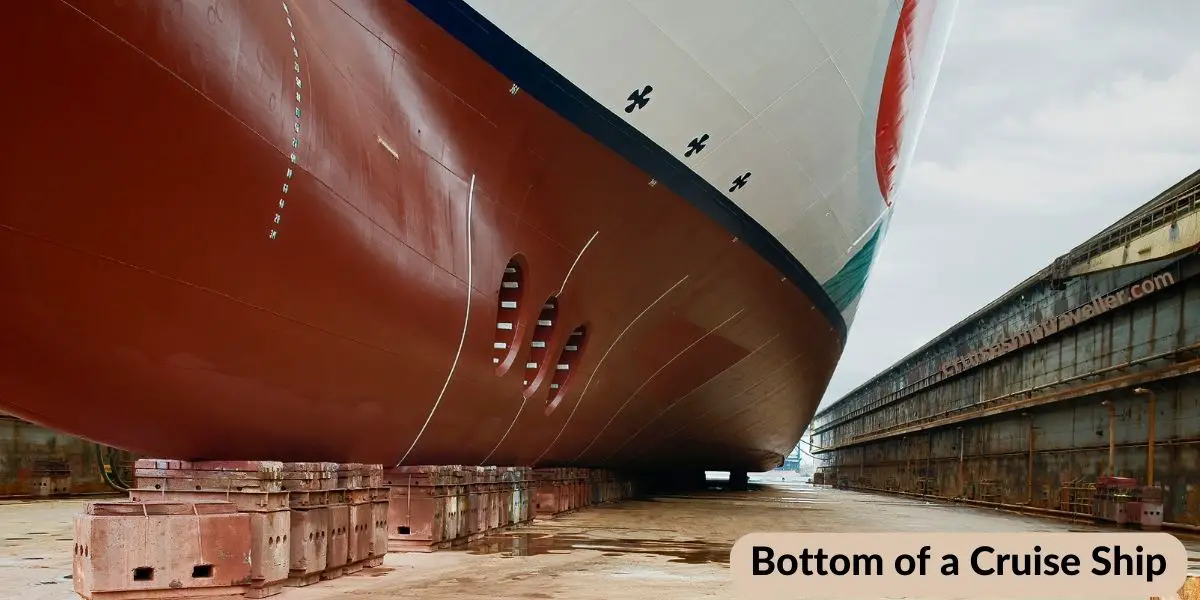
Bottom Parts of a Cruise Ship
On such massive vessels, there are various prominent parts to the bottom of a cruise ship.
We take a look at each of the main parts below.
When people refer to the bottom of a cruise ship, they are primarily referring to the hull.
The hull is the water-tight lower body of the ship. It is the part that extends down into the water and upwards to the lower decks of the ship
Cruise ship hulls are made from hundreds of steel panels all welded together and carefully smoothed over to be as smooth as possible.
Large ocean-going cruise ships have U-shaped displacement hulls designed to push water aside as it moves forwards and keeps the cruise ship afloat . The width of the hull acts as a stable base, especially in rougher seas.
The keel of a ship is the bottommost structural part of the ship which runs from the bow to the stern along the centerline.
Bilge Keels
Blige keels are on either side of the bottom of the cruise ship. These nautical devices run parallel to the keel and act to reduce the ship’s ability to roll on either side in the water.
Bulbous Bow
Often, the very bottom front end of the cruises ship is a bulbous bow. This is a large rounded projection designed to reduce the ship’s drag. It does this by changing the way the waves move along the hull.
This results in the ship’s lower fuel consumption.

Are Cruise Ship Bottoms Flat?
The majority of cruise ships’ bottoms are flat, although not completely flat all the way along.
A wide flat bottom makes the vessel more stable, which is essential for minimizing any movement or rocking on the ship, which is crucial for a vessel carrying passengers.
They are not so flat at the bow or the stern. The bow narrows into a projecting bulbous bow.
Whereas at the stern, the rear is raised in the area above the ship’s propellers as you can see in the photo below.
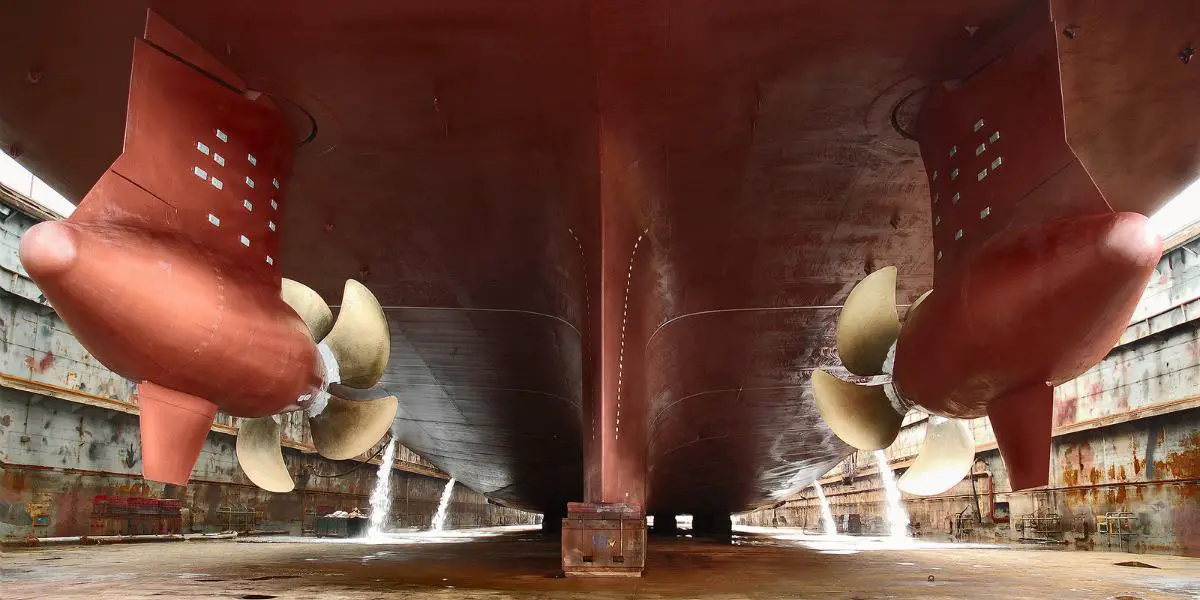
What Shape is the Bottom of a Cruise Ship?
The bottom of a cruise ship is normally designed in either a U-Shape or a V-shape, depending on which water conditions they will typically be sailing in.
The keel is broad and flat along the majority of the bottom of the cruise ship.
Towards the aft of the ship, the bottom rises above where the propellors are placed and broaden out into a more squarish shape at the stern.
Why is the Bottom of a Cruise Ship Red?
When ships were traditionally made of wood, the part of the cruise ship that’sunder water , the hull, was painted with copper paint or covered in some cases covered, with copper sheets.
This copper coating, which looked reddish in color, was to protect the hull from anything which might degrade it over time, most commonly worms eating into the wood.
There was also the benefit of preventing all kinds of barnacles, seaweeds, algae, and other microorganisms from attaching themselves to the bottom of the hull and, over time, adding weight to the ship.
This build-up of biological fouling (epibosis), can, over time, damage the protective paint and metal structures of the bottom of the ship.
Also, when foreign objects accumulate on the hull as well as adding weight to the ship, they act to increase the ship’s drag, thereby slowing the ship down and increasing the ship’s fuel consumption.
These factors might seem minor, but over the course of thousands of miles a year, the extra costs can be quite significant.
So while these days, many different colors of paint can be used to serve the same purpose it is now simply a nautical tradition to keep painting the hulls of ships red.
Anti-fouling
Modern cruise ships are made of steel, so there’s a danger of being eaten by worms, but there’s still the possibility of growth and barnacles attaching to the hull and reducing the smooth streamlined surfaces of the hull.
To prevent this, the metal hulls are painted with an anti-fouling paint, which contains copper which acts as a coating of biocide. Modern anti-fouling paints contain mostly contain cuprous oxides.
Due to the chemicals used with the anti-fouling copper oxide paints, cleaning the bottom of cruise ships is not allowed, as this would remove some of the paint and chemicals as well as potentially remove invasive sea plants and other microorganisms attached to the ships hull which could damage local ecosystems.
What Does the Bottom of a Cruise Ship Look Like?
A good way to see what the bottom of a cruise ship looks like is to look at videos and see the underneath from various angles.
After doing some research, I found some of the best videos with clear views of the very bottom of cruise ships.
Some are filmed from directly underneath the vessels in dry docks, as well as from other angles, to give you the best understanding of every aspect for the full length of the bottom of the ship.
In case you are wondering, we have covered here how cruise ships get launched into the water , from being in a dry dock.
Videos Underneath a Cruise Ship
The best way to see the bottom of a cruise ship is to get underneath it when it’s in a dry dock.
Underneath Regal Princess
The video below shows the bottom of the Regal Princess cruise ship, in Palermo, Italy.
In it, we can see footage right underneath the cruise ship.
0.45 & 1.07: You can start to make out the thin fin-like blige keels as the camera moves towards them.
1.00: Under the stern are the ship’s propellors
1.36: Is the ship’s huge anchor , freshly painted blue, behind which you can see three bow thrusters . Also, notice how flat the supported keel is.
1.40: The bulbous bow projecting forward from the bottom of the ship.
The Bottom of Grand Princess Cruise Ship
This amateur footage takes a look at the underside of the Princess Cruise, Grand Princess while in a dry dock for repair work.
They manage to get right under the ship provide a great view of how broad and flat the bottom of the ship is.
You can see this from viewpoint angles at 0.51 seconds and at 2.06 m they walk under the bilge keels directly beneath the ship’s hull.
At 3.43m you can see a fin stabilizer tucked into the ship’s hull. The fin stabilizer extends out further than the bilge keels , and unlike bilge keels, the angle of the fin can be changed to counter the force of the waves that are potentially going to cause the cruise ship to tip over .
At 5.07 you can see the Bulbous bow , and then when at the front of the bulbous bow (6.35), looking down the bottom of the ship, you can see how it widens out further back. As well as seeing three bow thrusters on either side of the front of the hull.
How Do You Clean the Bottom of a Cruise Ship?
Even with protective measures such as the anti-fouling paint, over time, the amount of microorganisms on the parts of the cruise ship underwater can build up.
To rectify the issue, the bottom of the cruise ship can be cleaned in one of two ways.
Firstly, the cruise ship can be dry docked and cleaned from the outside while it also undergoes other maintenance. Any time a cruise ship is dry docked it’s going to be expensive for the cruise line.
Another easier and cheaper option is to clean the cruise ship underwater using divers equipped with special cleaning devices.
This cleaning can only be carried out in permitted waters so as to reduce the risk of removing invasive species into local waters and damaging the ecosystem.
Some areas of the hull can also be automated with the use of cleaning drones.
You can see how the hull of a ship is cleaned underwater in the video below:
How Far Underwater Is The Bottom Of A Cruise Ship?
You can tell how much of a cruise ship is underwater by looking at the draft marks which are indicated on the bow and stern of the hull.
I hope this post has answered any questions you may have had relating to the bottom of a cruise ship.
If you have any further questions or insights into the bottom of a cruise ship please feel free to share in the comments.
Related Posts

What is the Draft of a Cruise Ship? (and Why Does it Matter?)

How Many Doors on a Cruise Ship? (Yes, I Counted)
Leave a comment cancel reply.
Your email address will not be published. Required fields are marked *
Save my name, email, and website in this browser for the next time I comment.

Hull Design: Engineering a Smoother Ride
Download video, related videos.


How Do Cruise Ships Float? The Science Behind Their Buoyancy
Cruise ships are massive vessels that can weigh hundreds of thousands of tons, yet they are able to float effortlessly on the water. Have you ever wondered how do cruise ships float?
The answer lies in the principle of buoyancy, which is the ability of an object to float in a fluid due to the upward force exerted by the fluid.
Cruise ships are designed to displace a large amount of water, which creates a buoyant force that supports their weight. The shape of the ship’s hull is also critical in ensuring that it stays afloat.
The hull is designed to be wider at the bottom, which helps to distribute the weight of the ship more evenly and increase its stability. Additionally, the hull is curved upwards at the front and the back, which helps to reduce drag and improve the ship’s speed .
Overall, the buoyancy principle and the design of the ship’s hull are the key factors that enable cruise ships to float. As you delve deeper into the fascinating world of cruise ships, you will discover many more interesting facts about these impressive vessels.
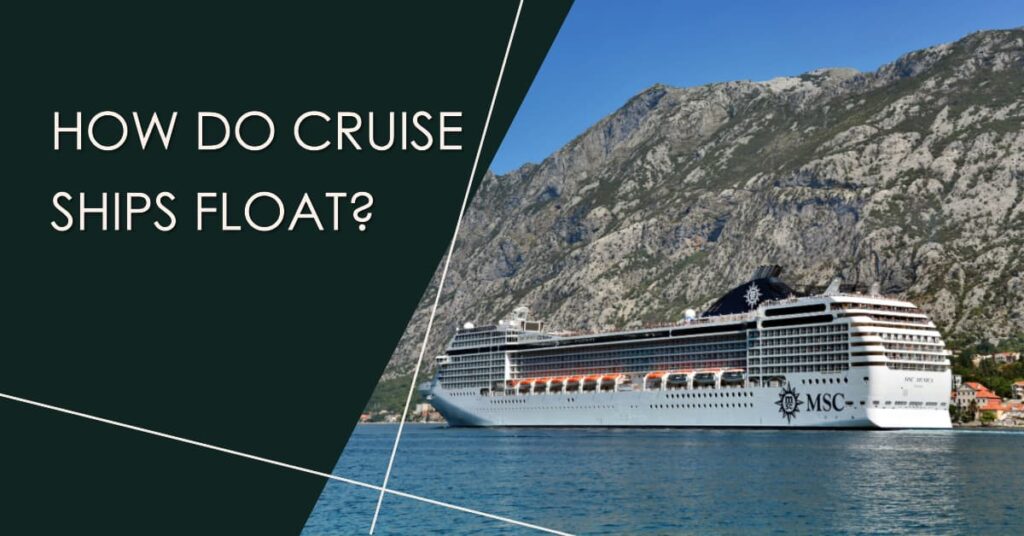
Understanding Buoyancy
Buoyancy is the force that allows objects to float in a fluid. This force is created by the difference in pressure between the top and bottom of an object submerged in a fluid. The concept of buoyancy was first discovered by the ancient Greek mathematician and physicist Archimedes, who realized that the buoyant force acting on an object is equal to the weight of the fluid displaced by the object.
The buoyant force is what keeps a cruise ship afloat. When a cruise ship is placed in water, it displaces an amount of water equal to its own weight. This displaced water creates an upward force that counteracts the downward force of the ship’s weight , allowing the ship to float.
The amount of water displaced by a ship is determined by its shape and size, as well as the density of the water. The density of water is affected by temperature and salinity, which can affect a ship’s buoyancy.
The buoyant force acting on a ship is equal to the weight of the water displaced by the ship. This force is always directed upwards, towards the surface of the water. If the weight of the ship is greater than the buoyant force acting on it, the ship will sink. If the weight of the ship is less than the buoyant force acting on it, the ship will float.
In summary, a cruise ship floats because of the principle of buoyancy. The weight of the water displaced by the ship creates an upward force that counteracts the downward force of the ship’s weight, allowing the ship to float. This principle is based on Archimedes’ principle, which states that the buoyant force acting on an object is equal to the weight of the fluid displaced by the object.
Cruise Ship Design and Structure
Hull design.
The hull of a cruise ship is designed to be streamlined and efficient, allowing the ship to move through the water with minimal resistance. The most common hull shape for cruise ships is the u-shaped hull, which provides stability and buoyancy. The hull is typically made of steel, which is strong and durable enough to withstand the rigors of the open sea.
Double Hulls
Many modern cruise ships have double hulls, which provide an additional layer of protection against accidents and collisions. In the event of a breach in the outer hull, the inner hull can help prevent water from flooding the ship and causing it to sink. The use of double hulls has become increasingly common in recent years, as cruise lines seek to enhance the safety of their vessels.
Deck Layout
The deck layout of a cruise ship is carefully designed to maximize space and provide passengers with a range of amenities and activities. Most ships have multiple decks, with public areas located on the lower levels and cabins and suites on the upper levels. The deck layout typically includes restaurants, bars, lounges, pools, and other recreational facilities.
Safety Features
Cruise ships are equipped with a range of safety features to ensure the safety and well-being of passengers and crew. These features may include lifeboats, life rafts, life preservers, and emergency evacuation systems. In addition, ships are equipped with sophisticated navigation and communication systems to help avoid accidents and respond quickly in the event of an emergency.
Overall, the design and structure of a cruise ship is carefully planned and executed to provide passengers with a safe, comfortable, and enjoyable experience at sea. The use of advanced materials, such as steel and double hulls, and the incorporation of a range of safety features help ensure that passengers can relax and enjoy their time on board without worrying about the ship’s ability to float.
The Science of Stability
Weight and balance.
Cruise ships are massive floating structures that can weigh up to hundreds of thousands of gross tons. To ensure that they remain afloat, it is essential to maintain a proper weight and balance. The weight of a cruise ship must be distributed evenly to prevent it from tipping over. This is achieved by placing heavy items like engines and fuel tanks at the bottom of the ship and lighter items like cabins and restaurants at the top.
Center of Gravity
The center of gravity is a crucial factor in determining a cruise ship’s stability. It is the point at which the weight of the ship is evenly distributed. A ship’s center of gravity must be below its center of buoyancy, which is the point at which the water’s upward force equals the ship’s weight. If the center of gravity is above the center of buoyancy, the ship will become unstable and capsize.
Stabilizing Systems
To maintain stability, cruise ships are equipped with stabilizing systems that counteract the rolling motion caused by waves. Stabilizing fins are one such system that extends from the ship’s hull to reduce rolling. Anti-heeling systems are another type of stabilizing system that uses water tanks to counteract the ship’s heel caused by waves.
Overall, the science of stability is a crucial aspect of cruise ship design and operation. By maintaining proper weight and balance, ensuring the center of gravity is below the center of buoyancy, and using stabilizing systems, cruise ships can remain stable and afloat even in rough seas.
Managing Ship’s Weight
Cruise ships are massive vessels that need to be able to float in the water. One of the key factors that determine a ship’s ability to float is its weight. Managing a ship’s weight is crucial to ensure it is balanced and can remain afloat. Here are some of the ways in which cruise ships manage their weight:
Ballast Tanks
Ballast tanks are compartments within the ship that are used to control its stability and balance. These tanks are filled with water to help the ship maintain its equilibrium. When the ship needs to be stabilized, water is pumped into the ballast tanks . Conversely, when the ship needs to be lightened, the water is pumped out of the tanks. This process helps to ensure that the ship remains stable and balanced, even in rough waters.
Fuel is a significant weight factor on a cruise ship. The ship needs fuel to power its engines and generate electricity. The amount of fuel required for a voyage can be significant, and it is essential to manage the weight of the fuel to ensure that the ship remains balanced. Fuel tanks are located in the lower part of the ship to help maintain the ship’s center of gravity.
Water Tanks
Water is another significant weight factor on a cruise ship. The ship needs fresh water for drinking, cooking, and cleaning. Water is also used to generate steam for the ship’s engines. Water tanks are located in the lower part of the ship, and their weight is managed to ensure that the ship remains balanced.
In conclusion, managing a ship’s weight is critical to ensure that it remains stable and balanced. Ballast tanks, fuel tanks, and water tanks are all used to manage the ship’s weight. By carefully managing the weight of these entities, cruise ships can remain afloat and provide a safe and comfortable voyage for their passengers.
Cruise Ships in Motion
Cruise ships are designed to float, but they also need to move through the water. The motion of a cruise ship can be affected by a number of factors, including the ocean itself, the open ocean, and ocean waves.
When a cruise ship is in motion, it is propelled forward by its engines. These engines work by burning fuel, which generates heat. The heat is then used to create steam, which drives turbines that turn the ship’s propellers . The propellers push against the water, which propels the ship forward.
The motion of a cruise ship can also be affected by the ocean itself. The ocean is constantly moving, and this movement can cause the ship to rock back and forth. This motion is known as pitch and roll. Pitch is the up-and-down motion of the ship, while roll is the side-to-side motion.
When a cruise ship is in the open ocean, it is subject to larger waves than it would be in calmer waters. These waves can cause the ship to pitch and roll more than usual. To counteract this motion, cruise ships are equipped with stabilizers. Stabilizers are fins that extend from the sides of the ship. They work by creating resistance against the water, which helps to reduce the ship’s motion.
In summary, cruise ships are designed to move through the water by using engines and propellers. The motion of the ship can be affected by the ocean itself, the open ocean, and ocean waves. To counteract this motion, cruise ships are equipped with stabilizers that help to reduce the ship’s motion.
Famous Cruise Ships and Companies
Royal caribbean international.
Royal Caribbean International is a popular cruise line that has been operating since 1968. It is one of the largest cruise lines in the world and has a fleet of 24 ships. The ships are known for their innovative designs and features, such as rock climbing walls, ice skating rinks, and surf simulators. Royal Caribbean International is also known for its commitment to sustainability, with a focus on reducing its environmental impact.
The Titanic is one of the most famous cruise ships in history. It was built in 1912 and was considered one of the most luxurious and advanced ships of its time. However, it’s tragic sinking on its maiden voyage has made it an infamous ship. The Titanic’s sinking was caused by hitting an iceberg, which caused the ship to sink and resulted in the loss of over 1,500 lives.
Wonder of the Seas
The Wonder of the Seas is a cruise ship that is set to debut in 2022. It is being built by Royal Caribbean International and is expected to be one of the largest cruise ships in the world . The ship will have a capacity of over 6,000 passengers and will feature a range of amenities, including a water park, a casino, and a spa.
Overall, these famous cruise ships and companies have played a significant role in the cruise industry. From the innovative designs of Royal Caribbean International to the tragic sinking of the Titanic, these ships have left a lasting impact on the industry and continue to shape its future.
Frequently Asked Questions
How do cruise ships stay afloat with so much weight.
Cruise ships are designed to displace a large amount of water, which creates an upward force called buoyancy. The weight of the ship is distributed evenly across the hull, which is shaped to maximize buoyancy. This allows the ship to float even with a large amount of weight on board.
How do cruise ships avoid sinking?
Cruise ships are equipped with a variety of safety features to prevent sinking. These include watertight compartments that can be sealed off in the event of a breach, multiple redundant systems for propulsion and steering, and regular inspections and maintenance to ensure the integrity of the hull and other critical components.
How do cruise ships maintain balance?
Cruise ships use a combination of ballast tanks and stabilizers to maintain balance. Ballast tanks can be filled or emptied with water to adjust the ship’s weight distribution, while stabilizers are used to counteract the effects of waves and wind.
How do cruise ships stabilize in rough seas?
Cruise ships use a combination of stabilizers and advanced navigation systems to maintain stability in rough seas. Stabilizers are designed to reduce the rolling motion of the ship, while navigation systems can help the ship avoid the worst of the weather.
How do cruise ships generate electricity?
Cruise ships generate electricity using a combination of diesel generators and other power sources such as solar panels and wind turbines. The electricity is used to power the ship’s propulsion systems, lighting, air conditioning, and other onboard systems.
How do cruise ships recycle waste?
Cruise ships are equipped with advanced waste management systems that allow them to recycle a significant portion of their waste. This includes systems for treating and purifying wastewater, as well as for recycling materials such as paper, plastic, and glass.
- Recent Posts
- The Role of Cargo Ships in Global Trade – August 22, 2024
- Report: Yang Ming’s YM Mobility Explosion at Ningbo-Zhoushan Port – August 9, 2024
- Understanding Drillships: Types, Key Features and Advancements – August 1, 2024
About the author
I worked as an officer in the deck department on various types of vessels, including oil and chemical tankers, LPG carriers, and even reefer and TSHD in the early years. Currently employed as Marine Surveyor carrying cargo, draft, bunker, and warranty survey.
Latest posts

The Role of Cargo Ships in Global Trade
Contents show Volume of Goods Transported by Sea Key Global Trade Routes Economic Impact of Maritime Shipping Types of Cargo Commonly Transported Environmental Considerations Conclusion Cargo ships are the lifeline […]

What Are AGVs? Automation Becoming Increasingly Common in Seaports
What are AGVs? Automated guided vehicles can minimize the troubles of manual operations and enhance seaport operations.
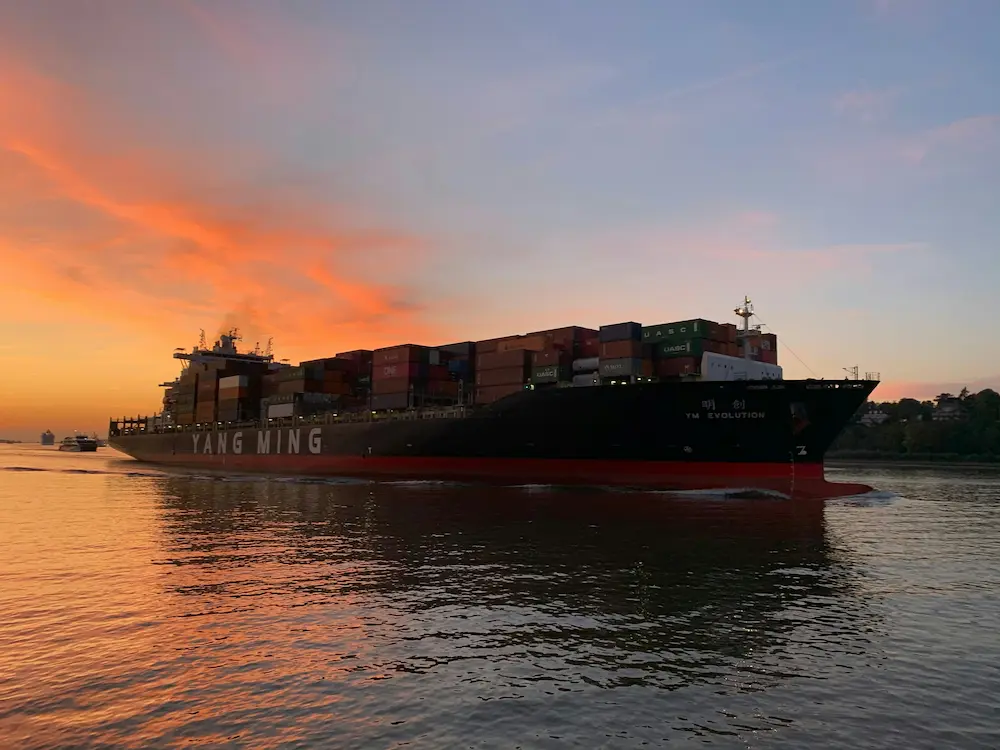
Report: Yang Ming’s YM Mobility Explosion at Ningbo-Zhoushan Port
A massive explosion occurred on the container ship YM Mobility while it was berthed at the Ningbo-Zhoushan Port in China

Cruise Ships, What Shape Are They Below the Water?
Have you ever seen a cruise ship you may be wondering what is below the waterline and how they actually manage to float?
A lot of a ship’s ability to float comes from the way that the ship is designed below the waterline.
Do Cruise Ships Have Flat Bottoms?
The bottom of a cruise ship is not perfectly flat, although it does look flat from a distance.
Under the water, the front of the ship is usually v-shaped or u-shaped, with the back of the ship having a square-like shape.
In this article, we will look at how the bottom of cruise ships are shaped – and why they are shaped like this .
We will also explore why the bottom of cruise ships are different to the bottom of Ocean Liners.

What Shapes Are the Bottoms of Cruise Ships?
If you look at a cruise ship from land, you may think that the bottom of the ship looks flat. Cruise ships often tower high into the sky and do resemble buildings in many cases.
If you were to take the ship out of the water. you’d see that the bottom isn’t perfectly flat.
I’ve been under a cruise ship. I visited the MSC Bellissima when she was being built and we were able to go under the cruise ship before the “Float-out Ceremony” – when the ship sails for the first time.
We were able to explore not only under the ship. but inside the ship too.
It was very surreal being in a ship that was mostly just steel. I’ve always understood the scale of cruise ships having cruised many times in the past, but being UNDER the ship was something different entirely!
Watch the video below to join me as we explore the ship:
How Does the Hull Shape Make a Difference to a Ship?
The hull is the main body of the ship. Hulls come in a variety of different shapes and can be built with different materials, depending on the purpose of the ship.
There are a few different types of hulls, including:
Displacement Hulls
Ships with displacement hulls are designed to move through the water by pushing the water to the sides.
If you were to think about a ship’s hull, this is probably what you think of by default.
When you put a ship into water, it has to displace water in order to be able to float. The amount of water it needs to displace for the ship to be able to float is carefully calculated when designing the ship.
The weight of the water that is displaced weighs the same as the ship according to Archimedes Principle.
If a ship’s hull displaced too much water, it would sink. Too little and the ship would sit too high on the water.
Planing Hulls
Ships with planing hulls are designed to glide across the top of the water.
An example of this would be a speedboat, where the front of the ship comes above the waterline.
Ships with Planing Hulls usually are designed to go faster than ships with Displacement Hulls.
Semi-Displacement Hulls
A ship with a semi-displacement hull, acts like a displacement hull when travelling at slow speeds, pushing water to the sides of the ship.
When the ship gains speed, it is able to act like a Planing hull.
What type of Hull Does a Cruise Ship Have?
Cruise ships have displacement hulls.
Engineers use lightweight but sturdy materials to help achieve the buoyancy needed to keep the ship afloat.
You can see in the photo below that the sides of the ship are built to displace the water as the ship is sailing.
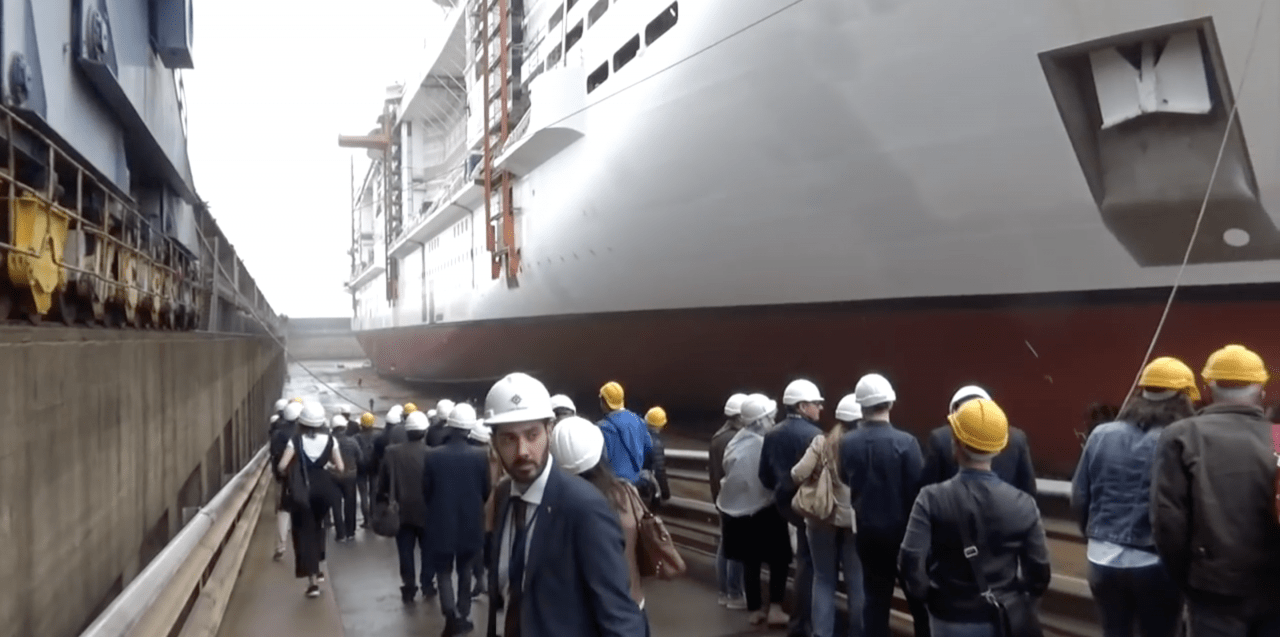
Why Are Cruise Ship Hulls The Shape That They Are?
Elimination of drag.
The rounded edges of the hull help to dissipate the drag or force of the water acting against the ship.
The shape allows the ship to easily travel through the water without too much resistance.
Fluidity and Stability
Ships with Displacement Hulls provide a steadier sailing, than ships with Planing Hulls.
Cruise ships are designed with the onboard experience in mind and being able to keep the ship as stable and steady as possible is very important.
Cruise ships also have stabilisers to help keep the ship as stable as possible for the guests. On the majority of cruise ship sailings, you will not experience any movement of the ship.
To learn more about how much of the movement on a cruise can be felt, check out this post below:
You May Feel Movement on a Cruise Ship – Here’s When and Why
Most cruise ships are built with a double hull (a hull within a hull) to help prevent damage.
Cruise ships are designed to last for decades and to be able to sail day after day without stopping to take any breaks.
The round bottom shape also helps with further protection from reefs, icebergs, and other damage to the ship.

Are There Any Downside to Displacement Hulls?
The drawback of a Displacement Hull is that the ships can’t go as fast as they might with a different hull shape.
That said, cruise ships still sail at around 20 knots, which is almost 25 miles per hour.
The Ocean Liner Queen Mary 2 has a maximum speed of just over 30 knots and a cruising speed of 26 knots. This is faster than a cruise ship.
The speed that a ship can go at is determined by a speed-length-ratio meaning that the length of the ship determines how fast it can realistically travel. The calculation is worked out as below:
Maximum speed (knots) = 1.34 x the square root of the waterline length (in feet) – source.
How Do Cruise Ships Compare to Ocean Liners?
Most people aren’t aware of the difference between cruise ships and Ocean Liners.
They may appear similar but there are significant differences in purpose and design. The design differences affect the hull in multiple ways.
Find out more about the differences in the article below:
Cruise Ships vs Ocean Liners – Measurable Differences You Need to Know
Do Cruise Ships and Ocean Liners Have Different Bottoms?
When Ocean Liners were created, their primary purpose was transportation – to get from point A to point B. Arguably, the most well-known Ocean Liner in history is the Titanic.
There are many important differences in cruise ships and Ocean Liner design.
This affects how the bottom of the ships are built. The chart below gives a basic overlook of the most important differences.
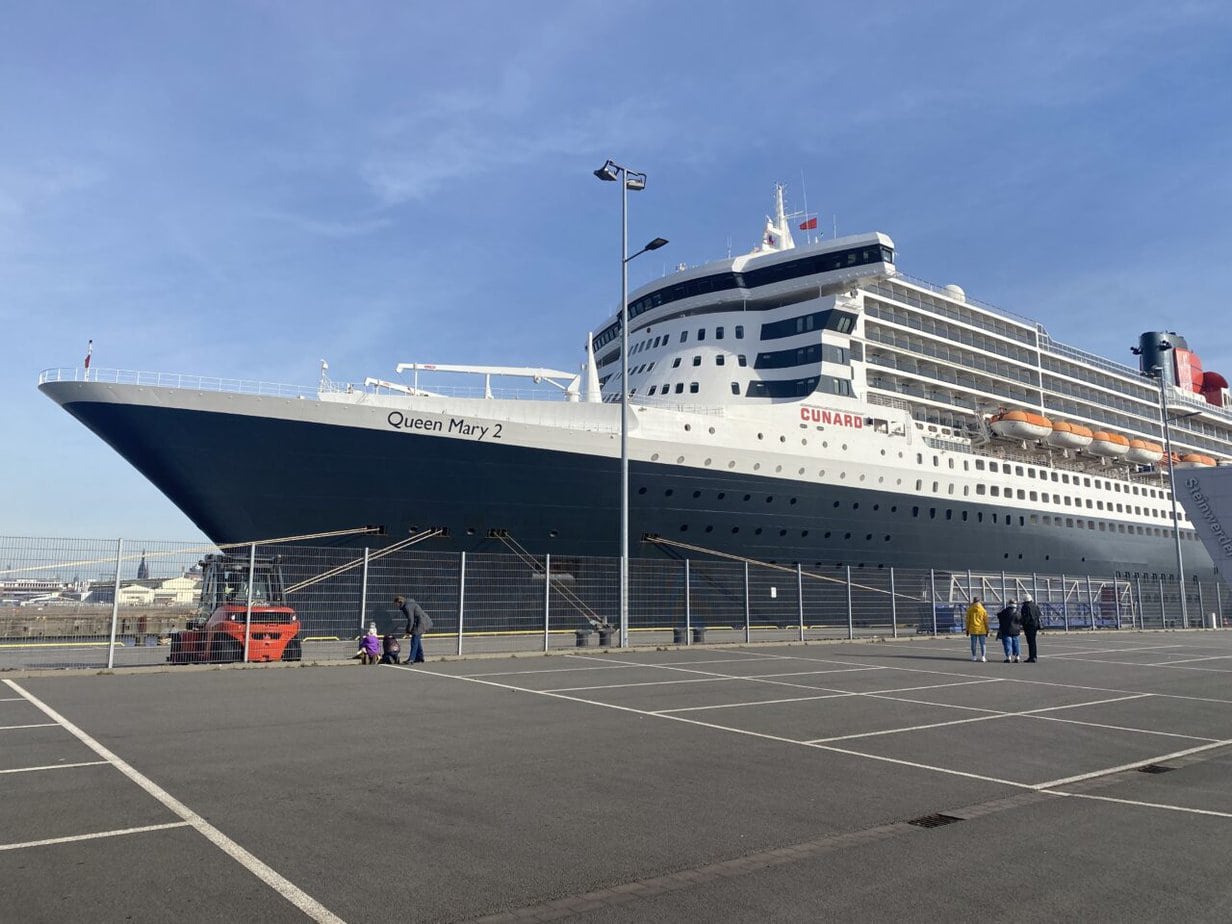
Ocean liners tend to sit quite low in the water and have a pointed bow. They are designed this way to be able to deal with bad weather and to minimize the feeling of movement onboard.
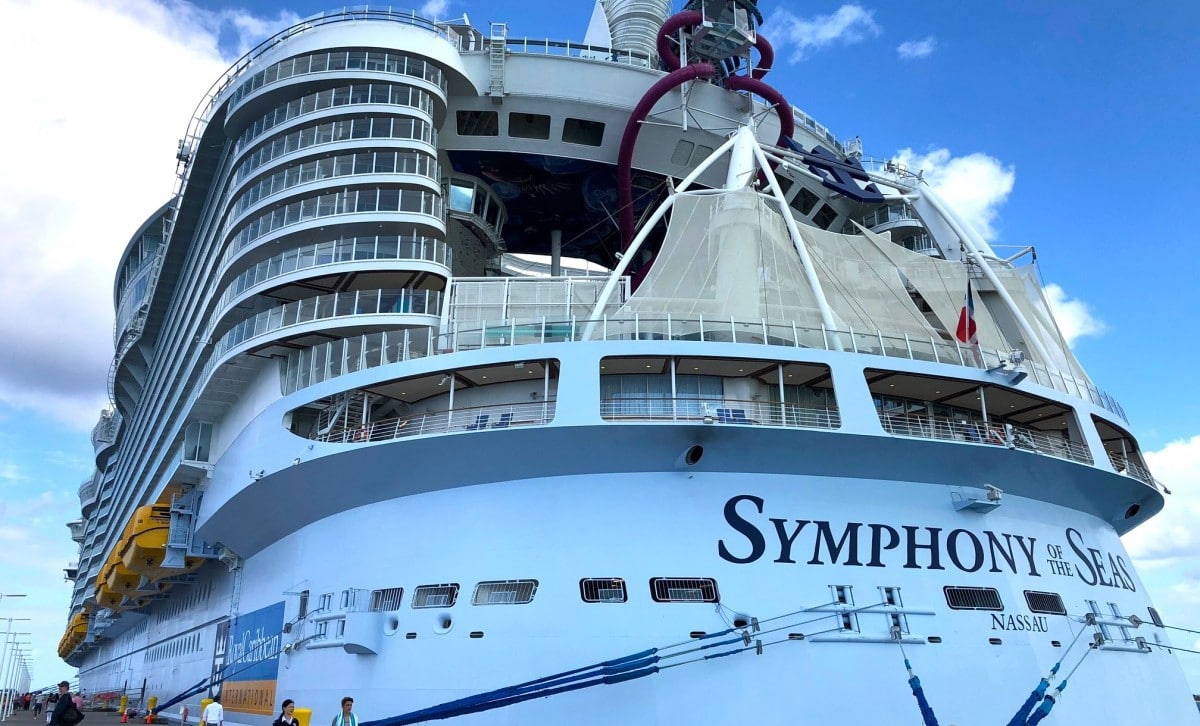
Cruise ships often sit high on the water and can often be strange shapes that aren’t hydrodynamic at all.
Cruise ships aren’t designed to deal with particularly bad weather, although modern ships do have powerful stabilizers.
Most cruise ships will try to avoid stormy weather and may slow down or change their route to do so, Ocean Liners are less likely to have to do this.
Ocean Liners generally have a stronger hull than Cruise Ships. Queen Mary 2 features steel hull plating – ” Thick for rigidity during Atlantic crossings .”
There is only one modernly designed ocean liner currently still in service, and that is the Queen Mary 2 (QM2), which is owned by Cunard.
It was completed in 2003. Cruise ships are still being built in large numbers.
I was lucky enough to sail on the last Ocean Liner, The Queen Mary 2. It was a very different experience to the normal cruises I take.
Find out all about that sailing here:
Before You Go
Find out more about Ocean Liners – including what happens to some when they are taken out of service – below:
Ocean Liners, They Still Exist: Here’s Everything You Need to Know
I stayed in the cheapest cabin when I sailed on the Queen Mary 2. Find out whether I enjoyed the experience here:
I Cruised in The Cheapest Cabin on the World’s LAST Ocean Liner – Queen Mary 2

Free Insiders Cruise Line Guide
Ever wondered how the mainstream cruise lines compare? Cruise lines won’t tell you this, but I will.
This FREE guide shows you everything you need to know to find your perfect cruise line.
Whenever I take a cruise I order a print of my trip. It uses the real satellite data from the cruise and is always a great conversation starter!
I'm building an impressive collection...
Code EMMACRUISES will get you 10% off
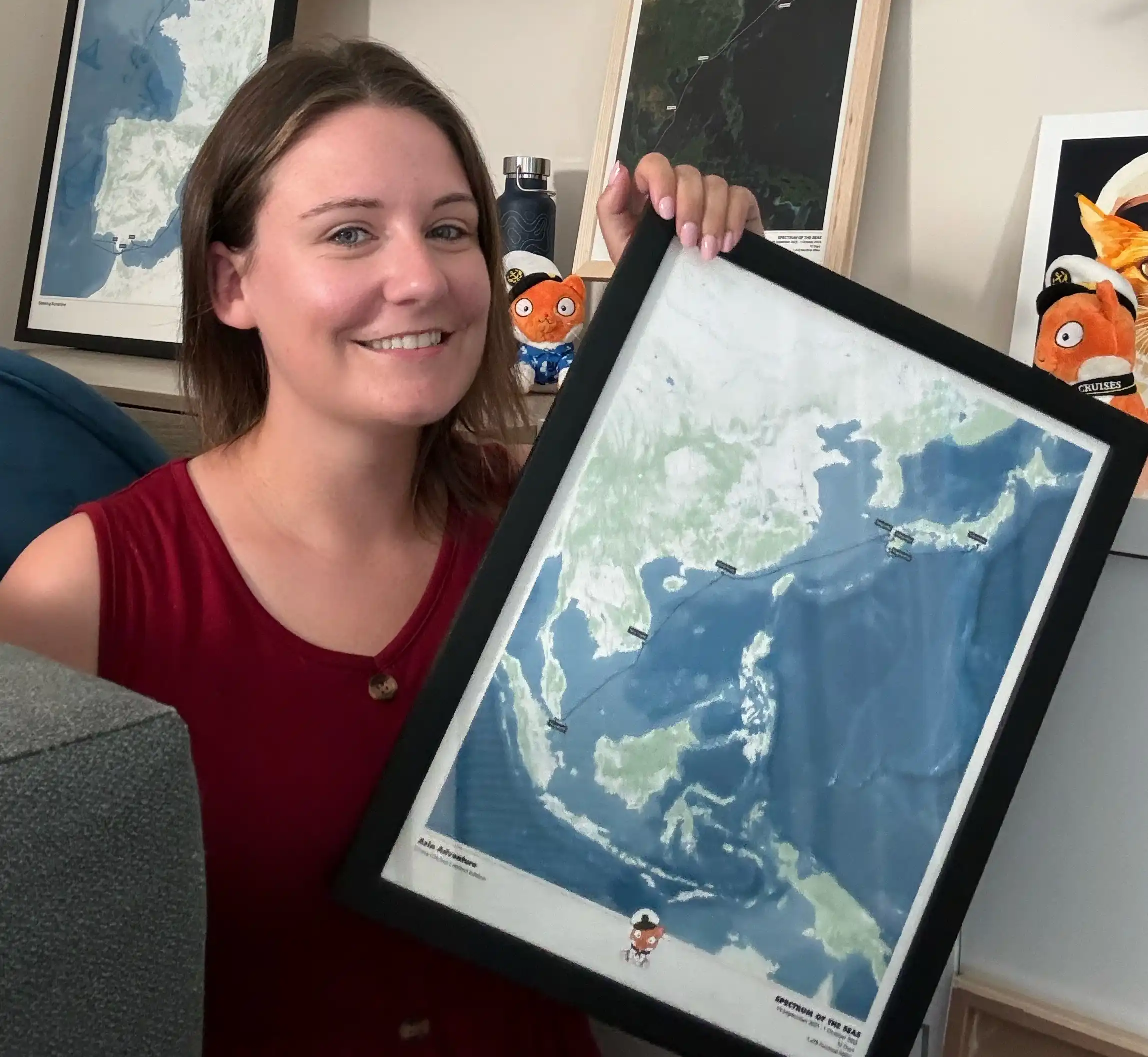
Enter your email address below:

How Thick Are Cruise Ship Hulls?
By Alice Nichols
Cruise ship hulls are designed to be thick and strong enough to battle through rough seas and arrive at their destination safely. Modern cruise ships are built to the highest standards, with hulls made of steel. The thickness of a cruise ship’s hull depends on its size and intended purpose, but generally speaking, the thicker the better.
The most common material used in building a cruise ship is mild steel, which is low-carbon steel alloyed with elements such as manganese and silicon. This type of steel is strong enough to withstand the pressure of the ocean depths when a ship is submerged. However, the strength of mild steel means that it can be difficult or impossible to repair if it becomes damaged in any way.
As such, many modern cruise ships are constructed out of higher-grade steels such as high tensile steel or even stainless steel. These types of steel are much stronger than mild steel and can withstand greater pressures from below – allowing for thicker hulls. The thickness of a cruise ship’s hull usually ranges from 6mm up to 40mm depending on its size and intended purpose.
Cruise ships also need to be structurally sound in order for them to remain upright when travelling through rough seas. To achieve this, they often have additional layers of protection that are built into the structure – such as extra layers of steel plating or watertight bulkheads. These extra layers serve as a buffer between the outer shell and inner workings of a vessel – helping to protect against wave action and other potential damage.
10 Related Question Answers Found
How thick is a cruise ship hull, how thick is the hull on a cruise ship, how thick is the hull of a cruise ship, how big is a cruise ship, how big is a typical cruise ship, how big is a large cruise ship, how thick is the steel hull on a cruise ship, how big is a normal cruise ship, how many decks does the largest cruise ship have, how big is the largest cruise ship, backpacking - budget travel - business travel - cruise ship - vacation - tourism - resort - cruise - road trip - destination wedding - tourist destination - best places, london - madrid - paris - prague - dubai - barcelona - rome.
© 2024 LuxuryTraveldiva

How Much Of A Cruise Ship Is Under Water? Don’t Worry! You Won’t Tip Over.
By: Author David Chapman
Posted on Last updated: October 14, 2023
Categories LEARN
When you stand on the shore and watch the massive ships slowly appear over the horizon, it seems improbable that they float and won’t capsize, even in low-sea states. You may wonder how much of a cruise ship is under water that allows it to handle ocean conditions like hurricanes (which they deliberately stay away from) with huge waves.
Let’s take a closer look at how much of a cruise ship is under water and how they are designed for a wide range of conditions.
So, Exactly How Much Of a Cruise Ship Is Under Water?
The amount of cruise ship that is underwater ranges from 20 feet, for a smaller ship, to 31 feet for the largest vessels. It means that only 13% of the ship’s hull and superstructure is underwater, which further reinforces how incredible the technology that marine engineers have developed.
The complete design of a cruise ship is built around the economics of the vessels and the needs, safety, and comfort of the passengers. All of the engineering decisions have been made with these factors in mind, and the results are the impressive cruise ships that travel the seas.
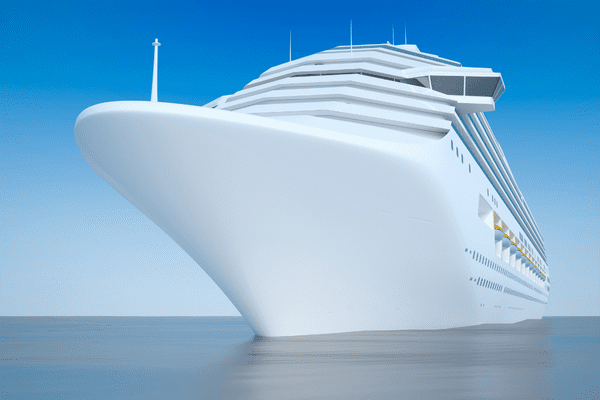
The Depth A Cruise Ship Is Under Water
To calculate how much of a cruise ship is underwater, we want to take the measurement between the cruise ship’s keel (the lowest point of the hull) and the water’s surface; this is called the draught.
The depth of cruise ships’ draught ranges from approximately twenty for smaller ships to more than thirty-one feet for one of the largest cruise ships in the world like Royal Caribbean’s Symphony of the Seas.
The measurement of the draught depends on the following factors:
- The shape of the cruise ship’s hull
- The weight of the cruise ship, including the engines, fuel tanks (whether it is full or not), the hull, superstructure, amenities, cabins, etc
- The weight of the passengers and the luggage
Archimedes was a mathematician, scientist, philosopher, and inventor born in 212 BC and lived in the city of Syracuse in Sicily.
He developed the Archimedes principle , which states that the force needed to keep the cruise ship (or any other floating item) afloat in the water must equal the weight of the water it displaces.
Royal Caribbean’s Oasis-Class generally contains the world’s largest cruise ships, such as Wonder of the Seas and Symphony of the Seas . The Oasis-Class ships have a displacement tonnage of about 100,000 tons . So those ships will displace 100,000 tons of water. (Note that displacement tonnage differs from the typically reported “gross tonnage,” which is a volumetric-based measurement.)
So, for an Oasis-Class ship, the ship will float as long as the amount of force that the water exerts back onto the cruise ship is equal to or greater than 100,000 tons.
The Shape Of The Cruise Ships Hull
The hull’s shape is a key determinant of how deep the cruise ships’ hulls are under the water (the draught).
The bigger the area of the hull which comes into contact with the water, the cruise ship bigger the surface area of the water and, therefore, the weight of the water.
As the ships do, in fact, float, it means that the upward force the water exerts on the boat is greater than the downward pressure it exerts on the water.
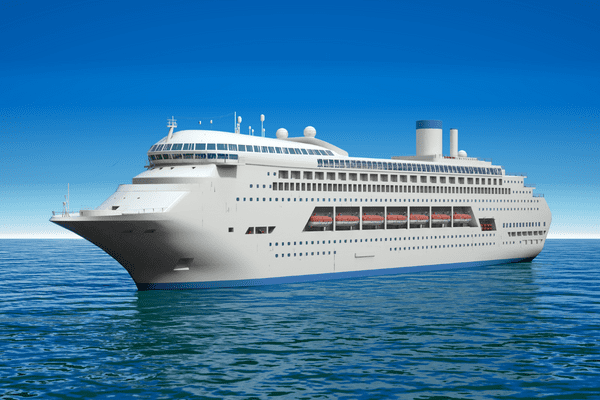
The Weight Of The Passengers
The weight of passengers on board also contributes to how much of a cruise ship is underwater.
For instance, the Symphony of the Seas cruise ship can carry 9,000 people , including passengers and crew.
The average weight of US males is 199.8 pounds. The average weight of US females is 170.8 pounds.
Assume each passenger has 100 pounds of luggage.
Assuming the ship has an equal number of male and female passengers, the weight of the passengers will roughly equate to:
- Men 899,100 pounds (500 tons)
- Women 768,600 pounds. (384 tons)
- Weight of baggage 900,000 pounds (450 tons)
The ship inhabitants, therefore, collectively weigh 1,334 tons. When the ship is completely loaded, it will sink into the water to a distance where the water weighs an additional 1,334 tons.
The effect is that the ship will sit 0.6% (or 0.72 inches) deeper.
What Facilities Are In A Cruise Ship Under Water?
In modern cruise ships, most of the “backroom” functions, and weight, are placed below the waterline and include the following:
- The engine room
- The water treatment plants (clean and dirty)
- Air conditioning units
- The fuel bunkers
- Water storage tanks
- The massive plumbing units
- Many crew cabins (Senior officers and staff are usually housed on higher decks)
On most ships, Deck 2 is the first deck fully above the water line (it may be numbered differently from one cruise line and class of class to the next) but is generally the reception area which the passengers embark and disembark from.
That deck is commonly fitted out with the food galleys and storage area, and dining room where the crew eats (the mess).
What Stops A Cruise Ship From Sinking?
The below deck areas serve two purposes regarding the ship’s flotation.
The Cruise Ship Stability
The below desk area ensures that the volumetric weight of water displaced is greater than the weight of the ship itself (Archimedes principle)
While cruise ships appear top heavy with a very small, the superstructure is relatively light, and all the heaviest equipment is placed below deck, which results in the ship being “bottom heavy” and, therefore, less prone to wild swaying or even capsizing.
They Provide Protection If The Side Of The Ship Is Holed
The ships are designed to provide a bigger buoyancy area to ensure “ two-compartment damage stability .”
It means that even if any two adjacent compartments are open to the sea, there will still be enough buoyancy to ensure that the ship will not sink.
While this is a design requirement, the ship will actually cope with worse damage.
Why Don’t Cruise Ships Have Underwater Viewing Areas?
For several reasons, it would not be realistic to have glass windows below the surface.
- Most of the time, the only view would be of disturbed water (wake), and there would be little to see.
- Even bulletproof glass would present a greater hazard of being damaged than a steel hull.
- The windowed area would also need frequent maintenance, and the cost-benefit analysis would make it uneconomic.
Closing Thoughts
Cruise ships are truly feats of engineering. How much of a cruise ship sits underwater ranges from 20 to 31 feet, depending on the size of the vessel. However, the safety and stability of a cruise ship aren’t due to the depth that it’s submerged, but rather a combination of factors such as the shape of the hull.
If you are fascinated by cruise ship facts, you may also enjoy this post .
Keep up with the latest cruise tips and insights! Follow us on Pinterest:
Related articles.
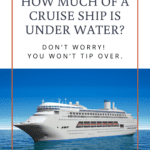

- 00800 0310 21 21 1-855-577-9489 1-877-288-3037 1-877-288-3037 1-877-474-2969
- | NCL Travel Blog">11-Reasons to Cruise to Alaska this Summer | NCL Travel Blog
- | Norwegian Cruise Line">14-Day Authentic Alaska - Northbound Cruise Tour | Norwegian Cruise Line
- | Deck Plans | Norwegian Cruise Line">14-Day Authentic Alaska - Southbound Cruise Tour | Deck Plans | Norwegian Cruise Line
- | Norwegian Cruise Line">20-Day Transpacific from Tokyo (Yokohama) & Alaska | Norwegian Cruise Line
- | NCL Travel Blog">11 Reasons to Cruise to Alaska this Summer | NCL Travel Blog
- View All Results
- Preferences
- Latitudes Rewards
- Special Offers
- Personalised Recommendations
- Make reservations before you cruise
- 1 (current)
* Terms & Conditions Package not available on sailings less than 5 days or charter sailings.
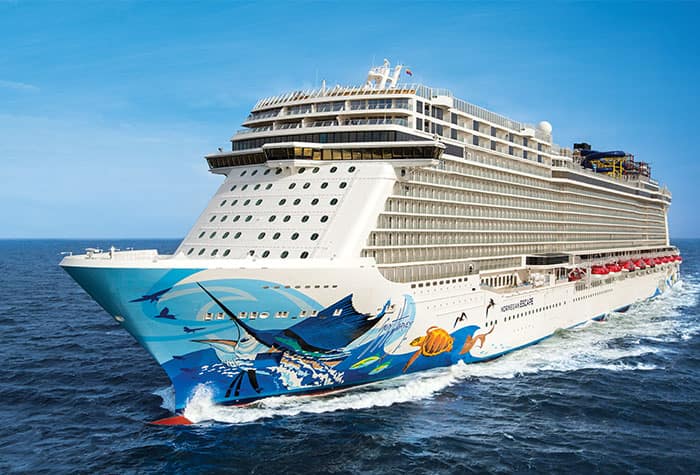
A Closer Look at the Hull Art on Norwegian Cruise Line Ships
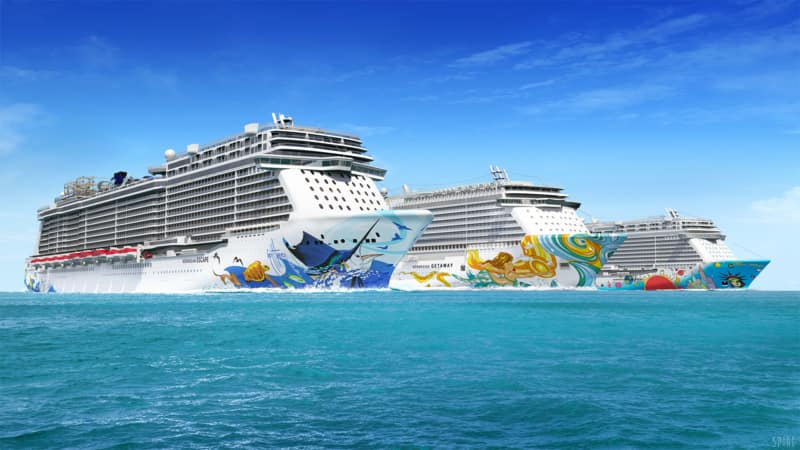
Have you ever noticed how vibrant the hulls are on Norwegian Cruise Line ships ? These incredible works of art have been showcased in photos taken by cruise passengers around the world. And rightfully so, as they really are significant works of art. But do you know who the artists are? Let's take a closer look at the hull art on Norwegian Cruise Line ships.
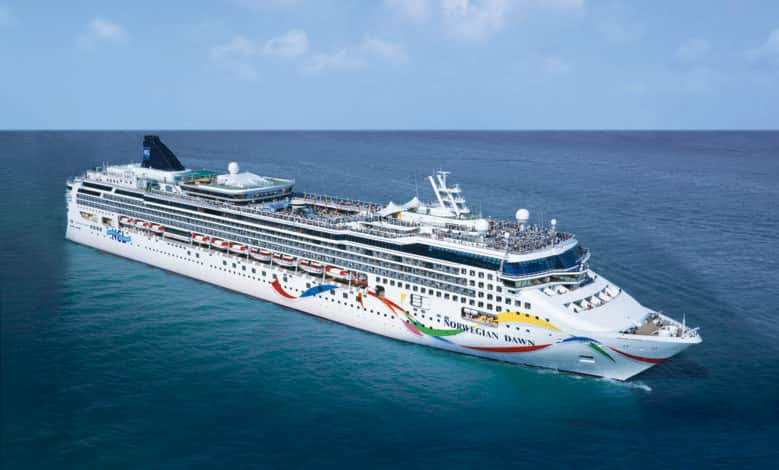
Norwegian Cruise Line first started its hull artwork concept with Norwegian Dawn when she entered service back in 2002. Dawn's hull art was created by the London firm SMC Design and soon after all ships have come to feature unique, colorful designs and artists. All Norwegian Cruise Line ships that entered service prior to 2008 were also retrofit with hull artwork.
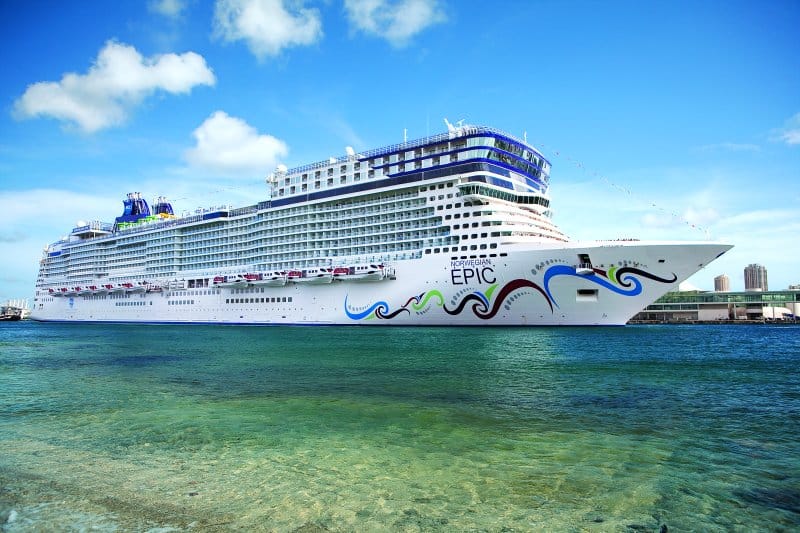
Next, Norwegian Epic got the royal design treatment from the in-house creative service team at Norwegian Cruise Line. And to this day, its the only ship in their fleet whose hull art was designed in-house. Such a talented group of people!
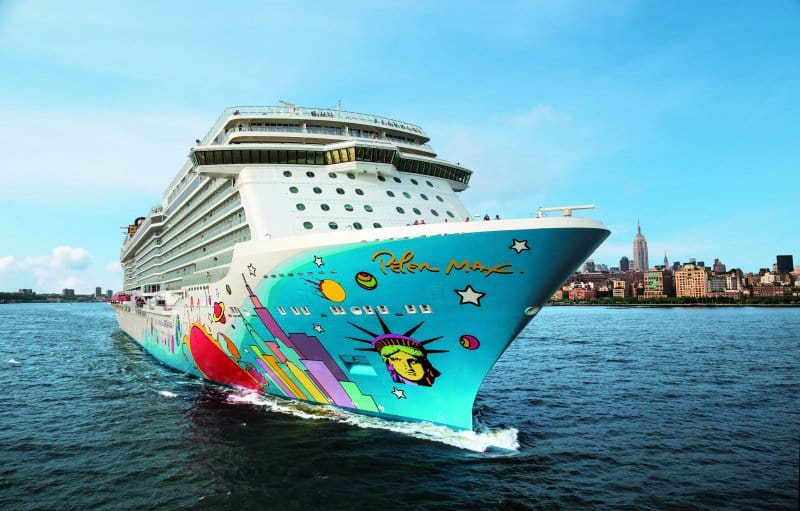
In 2013, Norwegian Cruise Line decided to take its hull art program to the next level by commissioning world-renowned artists to create signature artwork for their new ships. Norwegian Breakaway received a New York City skyline courtesy of Peter Max, a popular artist known for his colorful, pop icon-style paintings. For her sister ship, Norwegian Getaway , Norwegian Cruise Line reached out to Miami artist, David "Lebo" Le Batard, who created a whimsical mural featuring a mermaid, tropical palm trees, and pelicans.
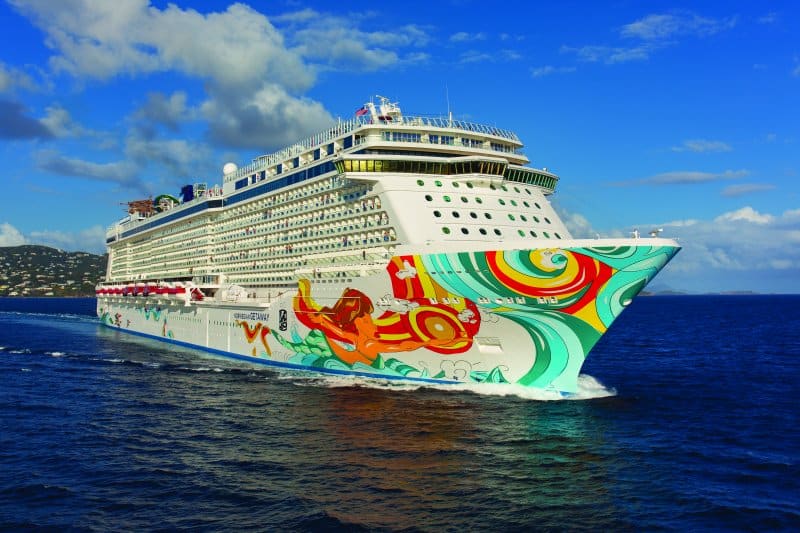
The next ship to receive the artist treatment was Norwegian Escape , the first ship in the Breakaway Plus class. This time, Jamaican ocean conservationist and marine wildlife artist, Guy Harvey, was chosen to create a glimpse into the underwater world which includes a huge cresting marlin! And besides the artwork itself, Norwegian Cruise Line has partnered with the Guy Harvey Ocean Foundation in support of their mutual commitment to the environment and ocean conservation efforts.
The work of Chinese artist Tan Ping is featured on the hull of another Breakaway-Plus class vessel, Norwegian Joy . Purpose-built to home port in Shanghai and Beijing, the distinctive artwork on Norwegian Joy hull focuses on a mythical red phoenix, which has been found in Chinese art for centuries. The hull sports an almost magical quality including vivid ocean waves. The hull art designs for both of these Breakaway-Plus ships are meant to serve as a beacon for conservation, showcasing the beauty of our oceans and all of the marine life that lay within them.
What's coming up? Norwegian Cruise Line continues to advocate for ocean conservation through their latest partnership with another renowned marine artist, Wyland, whose artwork will be featured on the hull of the new ship, Norwegian Bliss , set to start sailing to Alaska beginning in June of 2018. Fittingly, his piece entitled Cruising with the Whales will include a prominent mother humpback whale and her calf, along with other marine life. How cool is that?
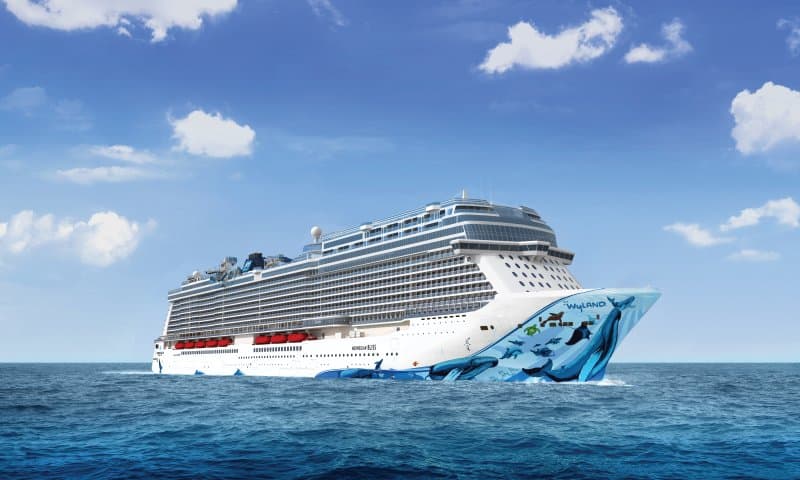
If you'd like to channel these exquisite works of art at home, why not attend a live art auction while on board your Norwegian Cruise Line ship? Park West Gallery represents several of the talented hull artists mentioned above, so you can grab a great deal while bringing home a little piece of the sea with you. Or a skyline. But not a mermaid.
Read more: 9 Things You Didn't Know About Your Next Cruise !
Hull cruise port
Ireland - uk - british isles.

- Coordinates 53.738, -0.331
- LOCODE GBHUL
- Local Time 2024-08-26 03:18
Hull cruise ship schedule
- Temperature

- Food & Drink
- How to Plan
- Shore Excursions
- Onboard Activities
- What to Expect
One Hull of a Ride: What Life Was Like on Ships Throughout History
By Carnival Cruise Line
Ahoy, fellow adventurous! Ever wonder what life was like aboard the great ships of the past? Strap on your life vests and join in on a journey through time, exploring the high seas and the tales of those who dared to navigate them. From infamous pirate ships to majestic naval vessels, discover the legendary vessels that continue to inspire awe and adventure. Experience the thrill, excitement, and beauty of maritime history, and let your imagination set sail on the waves of the past. Get ready for one hull of a ride!
The Queen Anne’s Revenge

The Queen Anne’s Revenge knew anything but smooth sailing. Full of excitement, adventure, and the occasional sword fight, it was commanded by the notorious pirate Blackbeard. Known for tying slow-burning fuses into his beard to create a terrifying, smoky aura during battles, Blackbeard was as fearsome as they come. Despite his cutthroat nature the ship met its unfortunate fate off the coast of North Carolina in 1718, but its legend lives on, continuing to captivate the imagination of many.
The USS Missouri

Life on the USS Missouri was a blend of discipline and camaraderie. Sailors worked around the clock, maintaining the ship and preparing for battle. This vast vessel was like a floating city, complete with sleeping quarters, mess halls, and even recreational facilities. Today, it stands as a museum ship at Pearl Harbor , on the island of Oahu, Hawaii , inviting visitors to walk its historic decks.
The SS Lane Victory
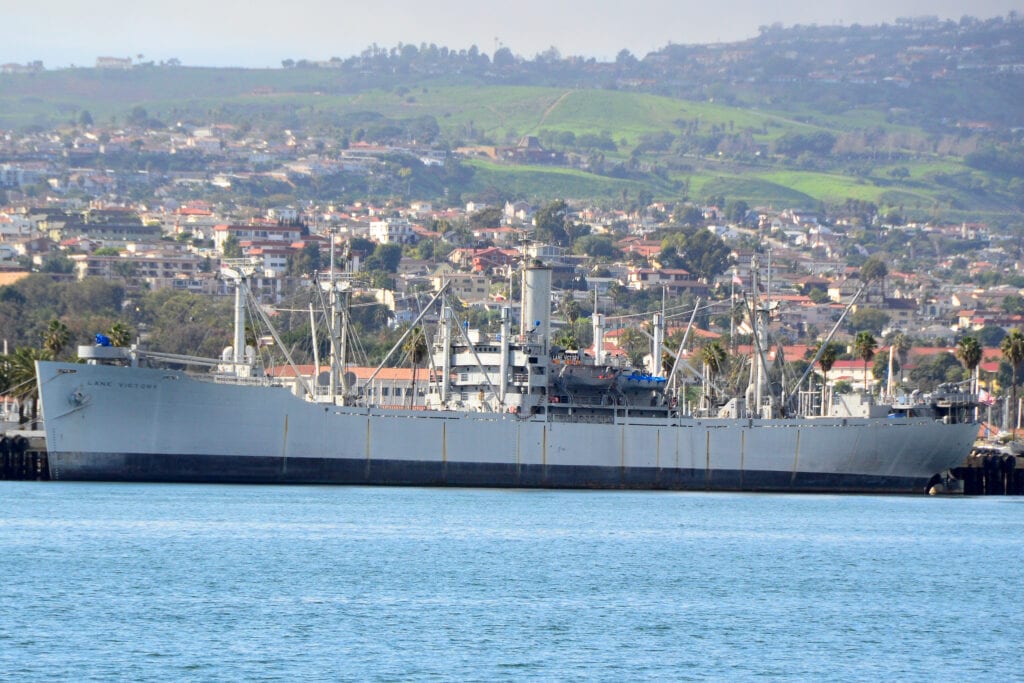
Launched in 1945, the SS Lane Victory was a cargo ship built for World War II. It served in the Korean and Vietnam Wars, transporting goods and troops across treacherous waters. Life on the SS Lane Victory was all about hard work and resilience. Crew members faced long hours and rough seas but formed tight-knit bonds that allowed them to successfully do their duty with a sense of pride. Now a museum in Los Angeles, it has played a role in several movies and TV shows, preserving its storied past.
The Wyoming

The Wyoming, a wooden six-masted schooner built in 1909, was one of the largest wooden ships ever constructed. It transported coal and other goods along the Eastern Seaboard of the United States. With its massive sails and wooden hull, the crew members had to be skilled and fearless. The Wyoming’s size made it notoriously difficult to handle. The long wooden planks holding it together would twist and buckle under the strain of heavy seas, especially during rough weather. Seawater frequently seeped into the ship, compromising its integrity. These challenges eventually led to its demise in 1924, when it sank off the coast of Massachusetts.
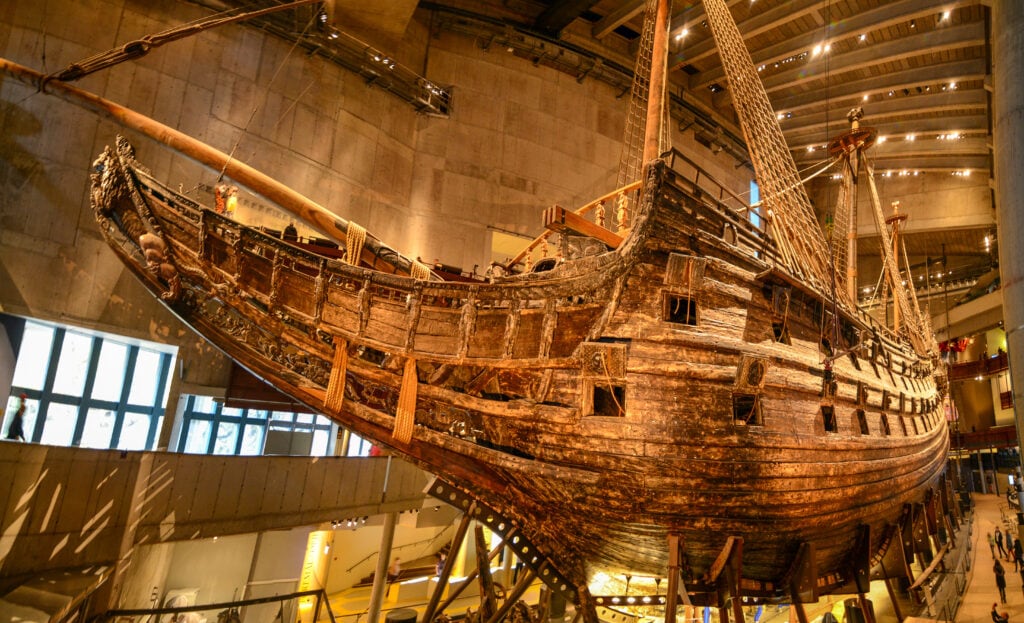
The Vasa was a grand Swedish warship launched in 1628, and is famously remembered for its lackluster maiden voyage. Despite this less-than-glorious start, the Vasa remains a fascinating piece of maritime history. The ship was richly decorated, but its top-heavy design spelled disaster. The crew’s experience was tragically cut short as the ship capsized in Stockholm harbor. Salvaged in the 1960s, the Vasa is now an iconic museum in Stockholm , offering a rare glimpse into 17th-century shipbuilding. You can visit the Vasa Museum yourself on a Carnival Cruise excursion, and dive deep into the fascinating history of this remarkable ship.
RMS Queen Mary
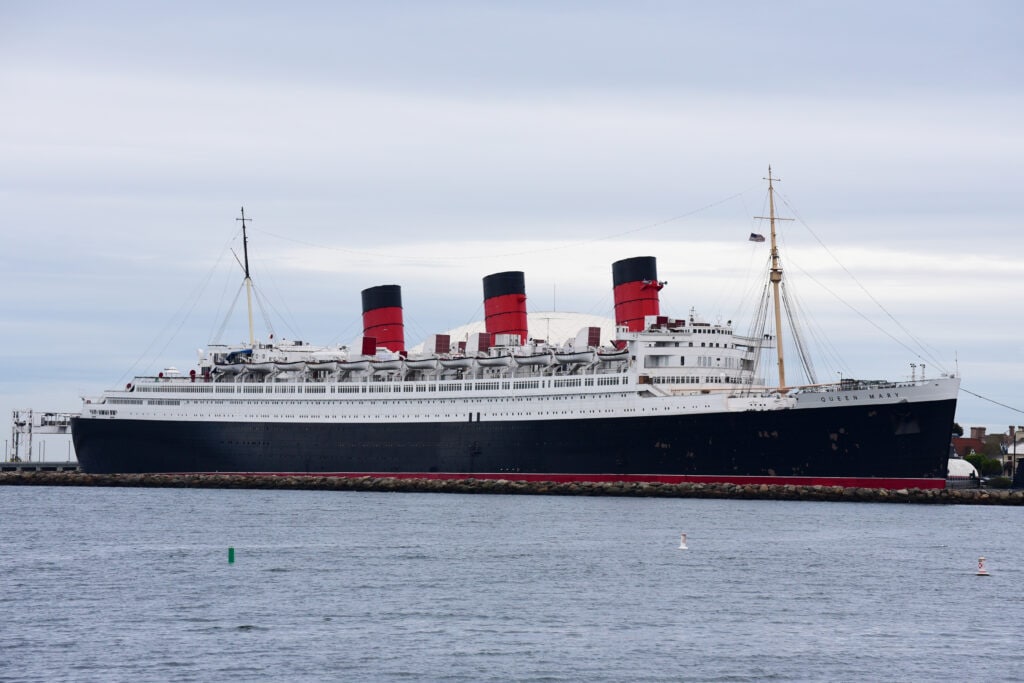
Launched in 1936, The RMS Queen Mary was a luxurious ocean liner that served as a troopship during World War II. Post-war, it returned to passenger service, becoming an icon of transatlantic travel. Life on the Queen Mary was the epitome of elegance and comfort, with passengers enjoying lavish accommodations, gourmet dining, and endless entertainment. Now permanently docked in Long Beach, California , the ship serves as a hotel and tourist attraction. However, it’s not just the rich history that draws visitors – many are intrigued by the haunting tales that surround this legendary ship. You can go on a Carnival Cruise Line excursion and encounter a ghostly guest or two for yourself!
After setting sail through naval history you’ll want to experience the thrill of the high seas for yourself. Look no further than Carnival Cruise Line, offering a captivating glimpse into a world of adventure and discovery. Hoist the anchor and set sail on your journey–there’s a world waiting to be explored. And while you’re dreaming of your next destination, check out our other blogs about history-rich spots around the world . Anchors aweigh!
Related articles
Explore off ship.
https://www.carnival.com/shore-excursions
Advertisement
Supported by
Questions for Investigators Trying to Unravel Mystery of Luxury Yacht’s Sinking
The investigators searching for answers about the shipwreck, leaving seven dead, face questions about extreme weather and possible human error or problems with the yacht itself.
- Share full article

By Alan Yuhas
More than 180 feet long, with a mast towering about 240 feet and a keel that could be lowered for greater stability, the Bayesian luxury yacht did not, in the eyes of its maker, have the vulnerabilities of a ship that would easily sink.
“It drives me insane,” Giovanni Costantino, the chief executive of the Italian Sea Group, which in 2022 bought the company that made the ship, said after its wreck last week. “Following all the proper procedures, that boat is unsinkable.”
But the $40 million sailing yacht sank within minutes and with fatal results: seven dead, including the British technology billionaire Michael Lynch, his teenage daughter, four of Mr. Lynch’s friends and a member of the crew. Fifteen people, including the captain, escaped on a lifeboat.
Mr. Lynch had invited family, friends and part of his legal team on a cruise in the Mediterranean to celebrate his acquittal in June of fraud charges tied to the sale of his company to the tech giant Hewlett-Packard.
The Italian authorities have opened a manslaughter investigation, searching for answers from the survivors, the manufacturer and the wreck itself. They face a range of questions and possible factors.
An ‘earthquake’ in the sky?
When the Bayesian sank around 4 a.m. on Aug. 19, the waters in its area, about half a mile off the Sicilian port of Porticello, were transformed by an extremely sudden and violent storm, according to fishermen, a captain in the area and meteorologists.
But what kind of storm is still a mystery, compounded by the fact that a sailing schooner anchored nearby did not have its own disaster. Also unclear is whether the crew was aware that the Italian authorities had issued general warnings about bad weather the night before.
Karsten Börner, the captain of the nearby passenger ship, said he’d had to steady his ship during “really violent” winds . During the storm, he said, the Bayesian seemed to disappear behind his ship.
Severe lightning and strong gusts were registered by the Italian Air Force’s Center for Aerospace Meteorology and Climatology, according to Attilio Di Diodato, its director. “It was very intense and brief in duration,” he said.
The yacht, he said, had most likely been hit by a fierce downburst — a blast of powerful wind surging down during a thunderstorm. His agency put out rough-sea warnings the previous evening, alerting sailors about possible storms.
Locals have said the winds “felt like an earthquake.” A fisherman in Porticello said that he had seen a flare go off in the early-morning hours. His brother ventured to the site once the weather had calmed about 20 minutes later, he said, finding only floating cushions.
The Italian authorities have so far declined to say whether investigators had seen any structural damage to the hull or other parts of the ship.
Open hatches or doors?
The boat executive, Mr. Costantino, has argued that the Bayesian was an extremely safe vessel that could list even to 75 degrees without capsizing. His company, the Italian Sea Group, in 2022 bought the yacht’s manufacturer, Perini Navi, which launched the ship in 2008.
Mr. Costantino said that if some of the hatches on the side and in the stern, or some of the deck doors, had been open, the boat could have taken on water and sunk. Standard procedure in such storms, he said, would be to switch on the engine, lift the anchor and turn the boat into the wind, lowering the keel for extra stability, closing doors and gathering the guests in the main hall inside the deck.
At a news conference on Saturday, almost a week after the sinking, investigators said the yacht had sunk at an angle , with its stern — where the heavy engine was — having gone down first. The wreck was found lying on its right side at the bottom of a bay, about 165 feet deep.

12 guests occupied the yacht’s six cabins. There were also 10 crew members.
Open hatches, doors and cabin windows could have let in water during a storm, according to the manufacturer.

Open hatches, doors and
cabin windows could
have let in water
during a storm,
according to the
manufacturer.
Source: Superyacht Times, YachtCharterFleet, MarineTraffic
By Veronica Penney
Water pouring into open hatches or doors could have contributed to the sinking, experts say, but that on its own may not account for the speed at which such a large boat vanished underwater.
Asked about the hatches at the news conference, the authorities declined to comment on whether they had been found open at the wreck.
The authorities have also not specified whether the boat had been anchored, whether it was under power at the time or whether its sails had been unfurled.
A retracted keel?
The Bayesian had a keel — the fin-like structure beneath a boat that can help stabilize it — that could be retracted or extended, according to its manufacturer. On some yachts, keels can be raised to let the large vessel dock in shallower water, and extended downward to help keep a boat level.
But like the hatches, the status of the keel alone may not explain why a large ship sank with such precipitous speed. Investigators have not disclosed what divers may have seen at the wreck, aside from saying divers had faced obstacles like furnishings and electrical wiring in tight quarters. Officials want to raise the wreck to better examine it, a process that may take weeks.
Human error?
Ambrogio Cartosio, the prosecutor in charge of the case, said at the news conference that it was “plausible” crimes had been committed, but that investigators had not zeroed in on any potential suspects.
“There could be responsibilities of the captain only,” he said. “There could be responsibilities of the whole crew. There could be responsibilities of the boat makers. Or there could be responsibilities of those who were in charge of surveilling the boat.”
It remains unclear what kind of emergency training or preparation took place before the disaster, or what kind of coordination there was during it. So far, none of the surviving crew members have made a public statement about what happened the night the ship sank.
Prosecutors said they want to ask more questions of the captain and crew, who have been in a Sicilian hotel with other survivors. They said that neither alcohol nor drug tests had been performed on crew members, and that they have been allowed to leave Italy.
Prosecutors also said they were also investigating why the captain, an experienced sailor, left the sinking boat while some passengers were still on board.
Besides possible manslaughter charges, the authorities are investigating the possibility of a negligently caused shipwreck.
The bodies of five passengers were found in one cabin, on the left side of the yacht, the authorities said. The five were most likely trying to flee to the higher side of the boat and were probably sleeping when the boat started to sink, they said.
Who was onboard tech mogul Mike Lynch's Bayesian yacht?
Topic: Disasters, Accidents and Emergency Incidents
Six people are missing, including a man dubbed the British Bill Gates, after a luxury yacht sank off the Sicilian coast.
British tech entrepreneur Mike Lynch — freshly acquitted from a decade-long trial — had invited his work colleagues aboard a trip through the Mediterranean coast when a freak storm saw the yacht sink within moments.
Fifteen people escaped from the sinking vessel. The search for the missing continues.
Here's what we know so far:
What happened?
The Italian coastguard said the yacht — the Bayesian — was anchored off the shore of port city Porticello, near the Sicilian capital Palermo, when it was hit by bad weather sometime after 4am on Monday, local time.
Eyewitnesses said it vanished quickly beneath the waves shortly before dawn.
Managers of the sailing vessel Bayesian, Camper & Nicholsons, confirmed to the ABC that the Bayesian encountered severe weather and subsequently sank.
"Our priority is assisting with the ongoing search and providing all necessary support to the rescued passengers and crew," they said.
"The wind was very strong. Bad weather was expected, but not of this magnitude," a coastguard official told Reuters.
Sicily's civil protection agency head, Salvo Cocina, said a waterspout — a tornado over the water — could have struck the yacht.
"They were in the wrong place at the wrong time," Mr Cocina added.
Storms and heavy rainfall had swept down Italy in recent days after weeks of scorching heat, lifting the temperature of the Mediterranean Sea to record levels and raising the risk of extreme weather conditions, experts told Reuters.
"The sea surface temperature around Sicily was around 30 degrees Celsius, which is almost 3 degrees more than normal. This creates an enormous source of energy that contributes to these storms," meteorologist Luca Mercalli said.
Rescuers recover the body of one of the people aboard the Bayesian. ( AP: Lucio Ganci )
Captain Karsten Borner of the Sir Robert Baden Powell vessel told journalists he noticed the Bayesian nearby during the storm, but after it calmed he saw a red flare and realised the ship had simply disappeared.
Mr Borner said he and a crew member boarded their tender and found a lifeboat with 15 people, some of them injured, who they then took aboard and alerted the coast guard.
Search crews, including helicopters and divers, are continuing to search the wreckage, lying at a depth of 49 metres.
Specialist divers reached the ship on Monday but access was limited due to objects in the way, the fire brigade said.
The UK Marine Accident Investigation Branch is deploying a team of four inspectors to Italy to conduct a preliminary assessment.
The Foreign Commonwealth and Development office said it was "providing consular support to a number of British nationals and their families".
Sicilian prosecutors have also opened an investigation into the event.
Who is missing?
Lawyer Chris Morvillo (left), entrepreneur Mike Lynch, and Morgan Stanley chairman Jonathan Bloomer are among the missing.
There were 12 passengers and 10 crew members aboard the yacht.
Mr Cocina said the crew and passengers hailed from a variety of countries, including Britain, the United States, Antigua, France, Germany, Ireland, Myanmar, the Netherlands, New Zealand and Spain.
Of the 22, one man is confirmed dead and another six people are still missing.
They are believed to be inside the hull, fire rescue spokesperson Luca Cari said.
Fabio Cefalù, a fisherman who said he responded to a flare from the vessel but found it sunk, said he stayed at the site for three hours without finding anyone.
"I think they are inside, all the missing people," he said.
Rescue teams recovered the body of the yacht's onboard chef on Monday, identified as Antiguan citizen Ricardo Thomas.
The still missing people include:
- Mr Lynch's 18-year-old daughter, Hannah
- Jonathan Bloomer, chairman of global financial services company Morgan Stanley International
- Chris Morvillo , a lawyer at the British multinational law firm Clifford Chance. He worked on Mr Lynch's lawsuit against Hewlett-Packard
- The identities of the remaining two missing are still unconfirmed
Who was rescued?
Fifteen people escaped from the sinking ship.
Eight have been hospitalised and others were taken to a nearby hotel.
Charlotte Golunski was among those rescued, recalling the harrowing moments she held her child Sofia above the waves. ( Supplied: Facebook )
Among those rescued were:
- Mr Lynch's wife, Angela Bacares, who was the owner of the yacht
- Charlotte Golunski and her one-year-old daughter, Sofia. Ms Golunski is a partner at Mr Lynch's firm, Invoke Capital. She says she momentarily lost hold of Sofia in the water but managed to hold her up above the waves until the lifeboat was inflated
- Ms Golunski's husband James Emslie
- New Zealand captain of the yacht James Catfield. He told Italian newspaper La Repubblica the crew didn't see the storm coming
- A lone Dutch citizen was identified by the Dutch foreign ministry as being rescued, but was not identified
Who is Mike Lynch?
Mr Lynch, once hailed as Britain’s king of technology, was recently freed from a Silicon Valley lawsuit that tarnished his legacy.
The 59-year-old Cambridge-educated mathematician created Autonomy , a search engine that could pore through emails and other internal business documents to help companies find vital information more quickly.
He received the OBE for his innovation in 2006.
He then sold the software to Hewlett-Packard (HP) for $US11 billion ($16 billion) in 2011, with Mr Lynch personally netting $US800 million.
HP valued Autonomy at $US46 billion ($68 billion) in the months leading up to the deal.
Mike Lynch in 2019 leaving the High Court in London. ( Reuters: Henry Nicholls/File Photo )
But the deal quickly turned sour after he was accused of forging the software's financial records to make the sale.
As part of a decades-long legal battle against HP, Mr Lynch was extradited to the UK on criminal fraud charges.
He steadfastly denied any wrongdoing, asserting that he was being made a scapegoat for HP's own bungling.
He was eventually cleared of all charges in June this year.
Although he avoided a possible prison sentence, Lynch still faced a bill from a civil case in London that HP mostly won during 2022. Damages haven't been determined in that case, but HP is seeking $US4 billion.
Following the San Francisco trial, Mr Lynch said he would return to the UK and do what he loved most: "[being with] my family and innovating in my field."
The holiday appeared to be something of a celebration after Mr Lynch's acquittal, with guests including some of the people who had stood by Lynch throughout the ordeal.
This picture shows the rescue operations off the Sicilian coast. ( AP: Italian Coast Guard )
In a separate act of tragedy, Mr Lynch's co-defendant in the trial, Stephen Chamberlain, died on Monday, after a road accident left him critically injured.
Mr Chamberlain — Autonomy's former vice-president of finance alongside Mr Lynch — was hit by a car in Cambridgeshire on Saturday morning and had been placed on life support.
What is the Bayesian?
The luxury yacht is 56m long sailboat, with a 75m mast labelled as the tallest aluminium mast in the world.
It was previously named Salute when it flew under a Dutch flag.
The yacht, built in 2008 by the Italian firm Perini Navi, can accommodate up to 12 guests in six suites and a crew of 10, according to online specialist yacht sites. It was last refitted in 2020.
Online charter sites listed it for rent for up to 195,000 euros (about $AU 321,000) a week.
This picture taken on Sunday shows the Bayesian (left) and the Duch sailboat Sir Robert Baden Powell anchored off the coast line. ( AP: Fabio La Bianca/Baia Santa Nicolicchia )
The ship also won a string of awards for its design.
Ms Golunski said the yacht had travelled through the Aeolian Islands, Milazzo and Cefalù before sinking.
It is likely the yacht's name would resonate with Mr Lynch because his PhD thesis and the software that made his fortune was based on Bayesian theory.
NEOM to use candela’s electric hydrofoil shuttle ships as water transport around its islands
Candela’s electric hydrofoil shuttle ships p-12 to arrive at neom.
Candela has announced that NEOM has ordered a fleet of P-12, its high-speed electric hydrofoil shuttle ships , to be used as water transport around the islands of the Saudi Arabian megacity. The Swedish boat manufacturer shared the news on Instagram, confirming that they will supply a fleet of their P-12 electric hydrofoil shuttle ships to NEOM. The deliveries will begin in 2025, in time for the expected construction deadline of the megacity in 2039.
Candela, which has also partnered with Polestar for its C-8 electric boat with hydrofoils painted in gold, describes the P-12 as the world’s first high-speed, long-range electric shuttle ship. If this is the case, it may fit well within NEOM’s Sindalah, the so-called luxury island destination in the Red Sea and part of the megacity. In a LinkedIn post, the NEOM team hints that something is coming to Sindalah. ‘Coming to the Red Sea, our sustainable gateway for the world’s yachting community will feature world-class hospitality and unforgettable experiences,’ the post says. This may indicate that the electric hydrofoil shuttle ships will find their new home on this island.
Vessels that can cruise at a speed of 16 knots
NEOM’s LinkedIn post alludes to a ‘world-class yachting club’ on Sindalah Island , the potential home of Candela’s P-12 electric hydrofoil shuttle ships. The Swedish boat manufacturer’s Instagram post adds that the addition of their zero-emission fleet to the Saudi Arabian project can ‘redefine waterborne transport with frequent departures, high speeds, and low energy costs,’ the technology team writes. The manufacturer also says that NEOM’s fleet order may be their largest one yet, marking a major milestone for the series’ growth.
The P-12 model took its first cruise as a real-life electric hydrofoil shuttle ship back in November 2023. During the test, the vessel cruised at a speed of 16 knots. It reached its designed top speed of 30 knots within 16 seconds as well. It appears to float because of the three carbon fiber wings beneath the hull. With this in mind, the boat manufacturer envisions its product as a modern and faster commuting transport.
Customizable interiors for electric hydrofoil shuttle ships
Clients like NEOM can customize the interiors of the electric hydrofoil shuttle ship. They can transform it into a business space with plush seats. They can also dress it up with a full-out voyager design similar to those found in luxury yachts. The Shuttle version of the electric vessel can accommodate up to 31 passengers at once. The manufacturer also claims that it can reduce commuting times from 55 to 25 minutes (depending on the location and based on their 2023 test). So far, NEOM has yet to announce the arrival of Candela’s P-12 fleet into their project.
the P-12 model took its first test cruise back in November 2023
Candela envisions P-12 as a modern commuting transport
project info:
manufacturer: Candela | @candelaboats
city: NEOM | @discoverneom
location: Saudi Arabia
happening this week! discover riva, the historic brand that blending technology and tradition, reinventing a contemporary, modern, and unique style for fiberglass yachts between 27 and 164 feet in length.
a look back at the developments of saudi arabia's futuristic NEOM project unveiled in 2023
public transportation (140)
Water vehicles (110), product library.
a diverse digital database that acts as a valuable guide in gaining insight and information about a product directly from the manufacturer, and serves as a rich reference point in developing a project or scheme.
- car design (830)
- luca trazzi (10)
- monterey car week 2024 (9)
- porsche (107)
- architecture in new york (592)
- pools (119)
- water filtration systems (25)
- automotive curiosity (300)
- electric motorcycle and scooter design (326)
- paris olympics 2024 (30)
- artificial intelligence (381)
- climate change (154)

Yacht Sank in Sicily Due to ‘Endless Chain of Errors,' Ship Maker's Owner Speculates: ‘Everything Was Predictable’
"A series of activities should have been done to avoid finding oneself in that situation," argues Giovanni Costantino, who owns the firm that built the vessel in 2008
- Giovanni Costantino — who is the CEO of The Italian Sea Group, the company that now owns Perini Navi, which built the Bayesian in 2008 — blames an "endless chain of errors" for the luxury yacht’s sinking on Monday, Aug. 19
- "Everything was predictable. I have the weather charts in front of me here," Constantino told Italian newspaper Corriere della Sera of the storm the boat was caught in
- "An unsinkable ship but from the crew an endless chain of errors," the CEO claimed to the outlet
The sinking of the luxury Bayesian yacht off the coast of Sicily this week resulted from an "endless chain of errors" by the crew, the ship maker's CEO is speculating.
"This episode sounds like an unbelievable story, both technically and as a fact," Giovanni Costantino — who leads The Italian Sea Group, the company that now owns Perini Navi, which built the Bayesian in 2008 — said, according to CNN .
While speaking to Italian newspaper Corriere della Sera , Costantino said he believes those on board should not have been in their cabins, as he claims they were, when the Bayesian sank in the early hours of Monday, Aug. 19.
Many details of why the yacht went into the water so quickly remain unclear and it's not yet known what the passengers and crew were doing before tragedy struck.
The 183-foot British vessel sank around 5 a.m. local time on Monday after a "violent storm" while near Porticello, the Italian coast guard said in a statement that was previously obtained by PEOPLE.
"Everything that has been done reveals a very long sum of errors. The people should not have been in the cabins, the boat should not have been at anchor. And then why didn't the crew know about the incoming disturbance?" Costantino said in his interview, translated from Italian.
Related: Italian Authorities Currently Don’t Have Anyone ‘Under Investigation’ over Luxury Yacht Sinking
"The passengers reported an absurd thing, namely that the storm came unexpected, suddenly. It's not true. Everything was predictable. I have the weather charts in front of me here. Nothing came suddenly ... Ask yourself, why was no fisherman from Porticello out that night? A fisherman reads the weather conditions and a ship doesn't? The disturbance was fully readable in all the weather charts. One could not not know," he argued.
"An unsinkable ship but from the crew an endless chain of errors," the CEO asserted.
The coast guard has said 22 people were aboard the Bayesian when it sank — 12 passengers and 10 crew — and that 15 of those were subsequently rescued.
The body of the yacht's chef, Recaldo Thomas, was recovered nearby.
Costantino's comments came as it was reported that five bodies had been found in the search for the missing six people as of Wednesday, Aug. 21, a source close to the rescue operations confirmed to PEOPLE. Authorities have said that their work is ongoing.
An Italian government official, Massimo Mariani, reportedly named one of the dead as British tech tycoon Mike Lynch . The other bodies have not yet been publicly identified by authorities.
Lynch was celebrating with family and friends on the yacht following his acquittal in a fraud trial in June, PEOPLE previously reported.
Related: 'We Are in Shock,' Prominent N.Y.C. Attorney's Firm Says After He and His Wife Go Missing in Yacht Sinking
Costantino offered his view of how the tragedy could have been avoided: "To begin with, in a weather alert situation it was inappropriate to have, as I read, a party. Not that evening. The hull and deck needed to be secured by closing all doors and hatches, after putting the guests at the ship's meeting point as per emergency procedure. Then start the engines and pull up the anchor or release it automatically, put the bow to the wind and lower the keel.
"The next morning they would have departed with zero damage."
When discussing whether the crew were at fault, Costantino reiterated to the Italian outlet that he believes "errors were made."
"A series of activities should have been done to avoid finding oneself in that situation," he said. "I as the ship's captain would have moved, but even if for some reason I had to stay there, I would have managed those weather conditions which then, let's face it, weren't so crazy."
Never miss a story — sign up for PEOPLE's free daily newsletter to stay up-to-date on the best of what PEOPLE has to offer, from celebrity news to compelling human interest stories.
Costantino contended that there would have been "a zero risk if the correct maneuvers had been made and if situations that compromised the ship's stability had not occurred," adding to the newspaper that reports that the boat went down in seconds is "nonsense." He believes the yacht would have "went down" after water "started to enter" within "six minutes."
The remaining missing Bayesian passengers are Lynch's daughter Hannah as well as Chairman of Morgan Stanley International Jonathan Bloomer, his wife, Judy , and New York City-based lawyer Christopher Morvillo and his wife, Neda , sources have said.
Lynch's wife, Angela Bacares, was among those rescued, PEOPLE previously reported.
For more People news, make sure to sign up for our newsletter!
Read the original article on People .


IMAGES
COMMENTS
The cruise ship hull may be one of the most overlooked areas of the ship, but it serves a vital purpose. Here is our full guide to cruise ship hulls.
Cruise ship hull designs vary greatly to meet specific navigational challenges and environments. From shallow V-hulls for river ships to robust constructions for expedition ships tackling icy waters, these hulls incorporate multiple layers of reinforced steel panels to ensure stability and protect against ice.
Explore the engineering and traditions behind the bottom of a cruise ship, from hull designs to the iconic red paint, blending maritime history with modernity.
What always amazes me about cruise ships is the incredible durability and toughness of their hulls. Fundamentally, the hull acts as the ship's protective shield, securing it against the harsh elements of the sea and guaranteeing the safety of everyone on board, including both passengers and crew members.
Cruise ship size comparison In our huge table below there's a list of all most famous, ever best passenger cruise ships sorted by name. This survey also offers smaller cruise ships size comparison of top luxury all-inclusive vessels with gross tonnage even lesser than 5,000 GT. Now the list of all ship sizes related and integrated articles:
The hull of a ship is the watertight outer skin covering the lower portion of the vessel. Modern cruise ships have hulls consisting of heavy steel panels welded together.
Hull. When people refer to the bottom of a cruise ship, they are primarily referring to the hull. The hull is the water-tight lower body of the ship. It is the part that extends down into the water and upwards to the lower decks of the ship. Cruise ship hulls are made from hundreds of steel panels all welded together and carefully smoothed over ...
Speed, agility and hull strength are the main differences between ocean liners and cruise ships. An ocean liner has the primary purpose of transporting passengers between continents, so ...
Moving a cruise ship through the ocean takes more than just a powerful engine, it also takes sophisticated engineering and construction. From the biggest innovations to the smallest details, see how the hull design of Oasis of the Seas makes for a smooth ride.
The hull of a cruise ship is designed to be streamlined and efficient, allowing the ship to move through the water with minimal resistance. The most common hull shape for cruise ships is the u-shaped hull, which provides stability and buoyancy.
A cruise ship's hull is an essential part of its design, and its depth determines how safe the ship is in rough waters. The deeper the hull, the more stability the ship will have.
Unlike ocean liners, which are used for transport, cruise ships typically embark on round-trip voyages to various ports of call, where passengers may go on tours known as "shore excursions". Modern cruise ships tend to have less hull strength, speed, and agility compared to ocean liners.
Under the water, the front of the ship is usually v-shaped or u-shaped, with the back of the ship having a square-like shape. In this article, we will look at how the bottom of cruise ships are shaped - and why they are shaped like this. We will also explore why the bottom of cruise ships are different to the bottom of Ocean Liners.
The answer to how much of a cruise ship that is underwater varies depending on several factors. It's all about the size of the ship and the amount of load being carried. But in general, it is around 10% of the ship's height or around 30 feet for the biggest cruise ships out there. The main thing to remember is that the amount of the ship ...
Thickness of the Hull - A cruise ship will have a standard thickness, whereas an ocean liner is designed to be extra thick to improve its durability and support the weight it is carrying.
The hull, the body of a cruise ship below its main deck, is wide and contains deep baselines. Large vessels like cruise ships usually have displacement hulls that push water out of the ship's way.
A cruise ship's hull is an important component of its design and construction. It is the outermost layer of the vessel, providing protection from the elements and ensuring the ship's structural integrity.
Cruise ship hulls are designed to be thick and strong enough to battle through rough seas and arrive at their destination safely. Modern cruise ships are built to the highest standards, with hulls made of steel. The thickness of a cruise ship's hull depends on its size and intended purpose, but generally speaking, the thicker the better.
The amount of cruise ship that is underwater ranges from 20 feet, for a smaller ship, to 31 feet for the largest vessels. It means that only 13% of the ship's hull and superstructure is underwater, which further reinforces how incredible the technology that marine engineers have developed. The complete design of a cruise ship is built around ...
Set sail with our last minute cruises from Hull with the likes of Cruise and Maritime to some of the best cruising destinations in the world.
Norwegian Cruise Line continues to advocate for ocean conservation through their latest partnership with another renowned marine artist, Wyland, whose artwork will be featured on the hull of the new ship, Norwegian Bliss, set to start sailing to Alaska beginning in June of 2018. Fittingly, his piece entitled Cruising with the Whales will ...
Port Hull cruise ship schedule shows timetable calendars of all arrival and departure dates by month. The port's schedule lists all ships (in links) with cruises going to or leaving from Hull, England. To see the full itineraries (ports of call dates and arrival / departure times) and their lowest rates - just follow the corresponding ship-link.
CruiseMapper provides free cruise tracking, current ship positions, itinerary schedules, deck plans, cabins, accidents and incidents ('cruise minus') reports, cruise news
Get ready for one hull of a ride! The Queen Anne's Revenge. SOURCE: This image from Qualiesin on Wikipedia is licensed under CC BY-SA 4.0. ... many are intrigued by the haunting tales that surround this legendary ship. You can go on a Carnival Cruise Line excursion and encounter a ghostly guest or two for yourself!
As many cruise ships shift homeports multiple times throughout their decades of sailing, it is somewhat unusual to put a distinctive icon on the hull that connects to a single homeport ...
Emergency workers in southern Italy are still hunting for six people missing after a tornado sank a luxury yacht early Monday - prompting an air and naval operation off the coast of Sicily.
"It drives me insane," Giovanni Costantino, the chief executive of the Italian Sea Group, which in 2022 bought the company that made the ship, said after its wreck last week. "Following all ...
Fifteen people escaped from the sinking ship. Eight have been hospitalised and others were taken to a nearby hotel. Charlotte Golunski was among those rescued, recalling the harrowing moments she ...
The P-12 model took its first cruise as a real-life electric hydrofoil shuttle ship back in November 2023. During the test, the vessel cruised at a speed of 16 knots. It reached its designed top ...
"An unsinkable ship but from the crew an endless chain of errors," the CEO claimed to the outlet; ... The hull and deck needed to be secured by closing all doors and hatches, after putting the ...